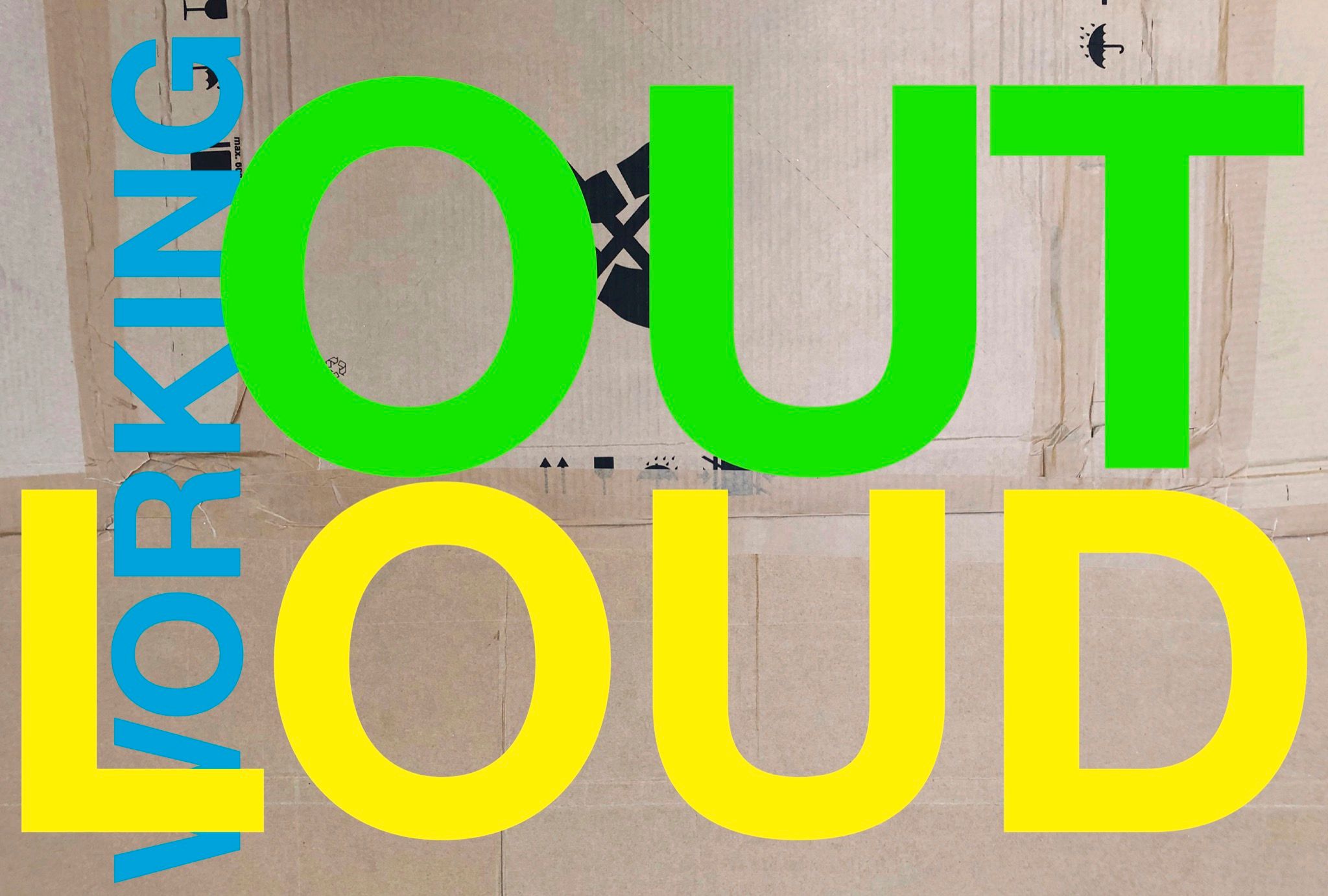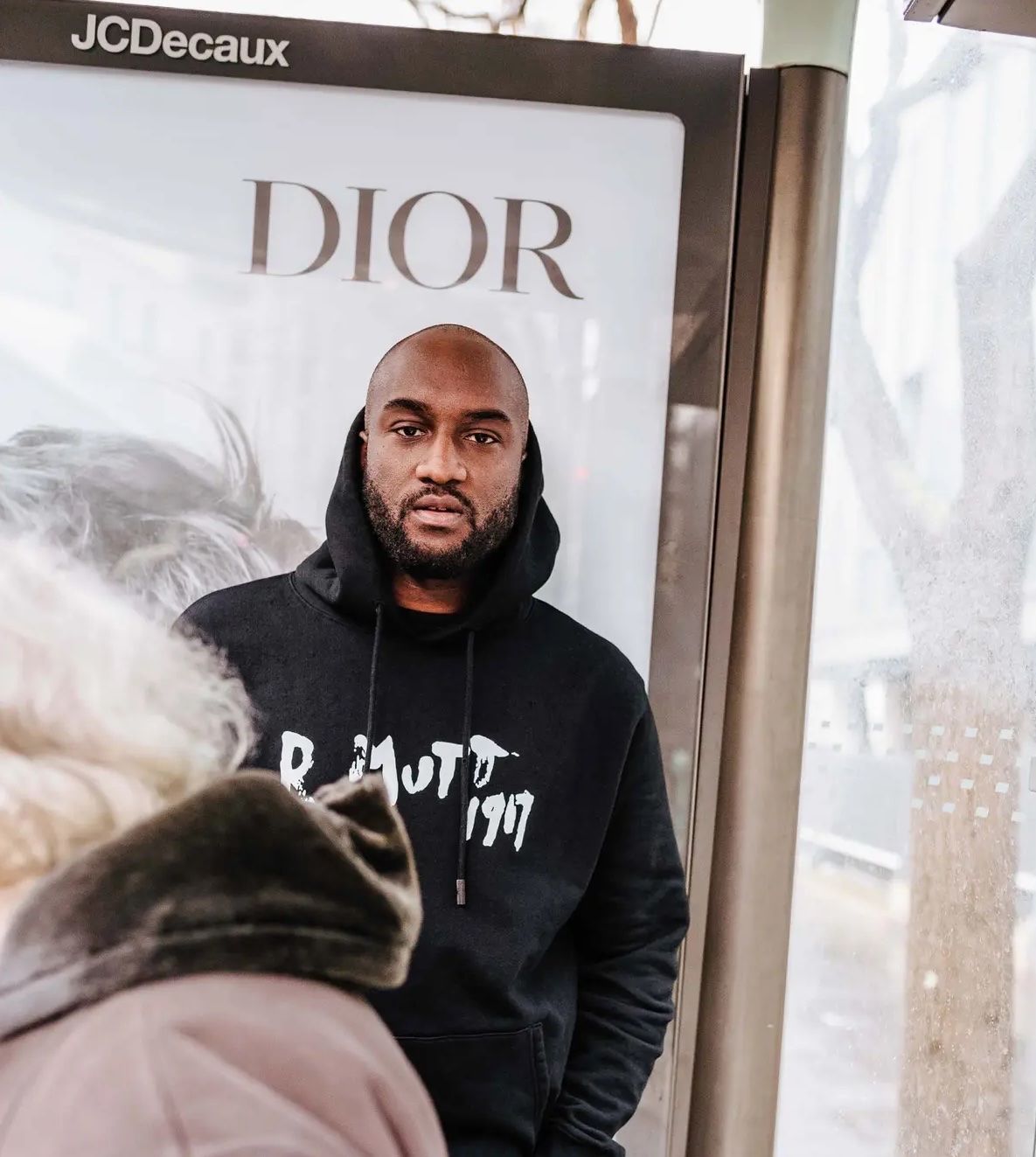NIKE in 2020: Strengths, Weaknesses, Opportunities, Threats
|Victoria Camblin
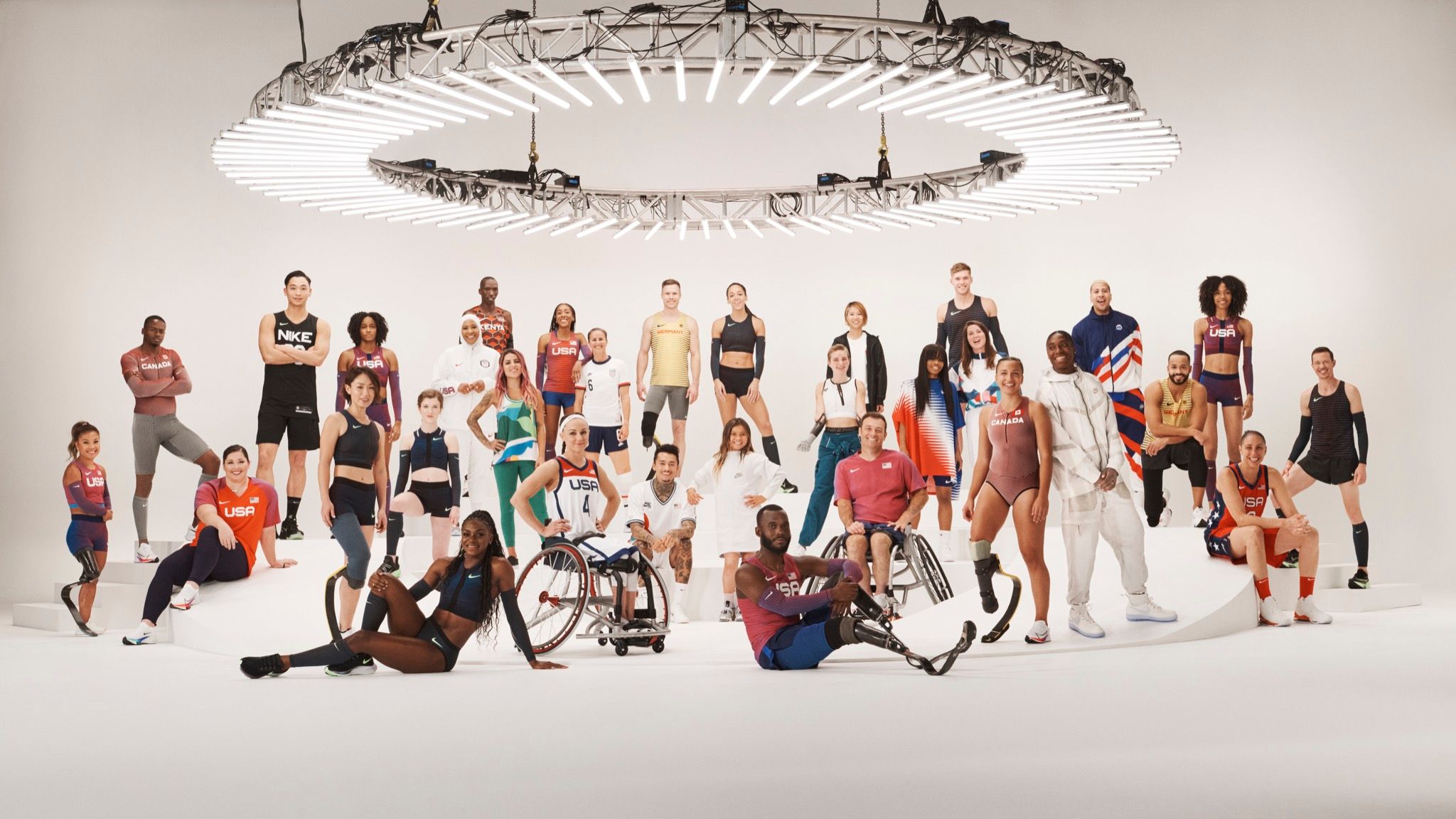
Roughly every four years, Nike throws a World’s Fair for sport tech, showcasing the brand’s latest innovations in gear ahead of the summer Olympic Games. Taking place in Tokyo this July, the 2020 Olympics are predicted to be the hottest on record. The marathon has been moved 500 miles north to Sapporo to avoid the punishing climate, and Nike, an official Olympic sponsor, has responded with temperature-regulating garments, record-breaking footwear, and a stated commitment not only to reduce its own contributions to climate change, but to “protect the future of sport” in the face of global disaster. Last week, these efforts were showcased in an ambitious presentation at New York’s The Shed: a high-budget, Diller Scofido + Renfro designed cultural center where pop stars and fashion leaders (Drake, Rosalía, Virgil Abloh) joined Nike’s newly minted CEO John Donahoe for a runway show of new product (national kit for the Games, performance wear, previews of upcoming capsules from external collaborators) modeled in part by a multi-generational sampling of Olympic and Paralympic athletes. Footage of the event is all over the Internet, but below, 032c returns to an old corporate strategy favorite – the SWOT (Strengths, Weaknesses, Opportunities, and Threats) analysis – to consider Nike’s position and message for 2020, and beyond.
STRENGTHS
You know you’re killing it performance-wise when World Athletics starts regulating against your product because it’s too good. Last year, Nike created a shoe so “ridiculously quick” that it carried Eliud Kipchoge across a marathon finish line in less than two hours – almost two minutes below his legal world record. The concept of “technical doping” became a hot topic in response, meaning that when Nike took performance stats into the future, it took public and institutional discourse there as well. Nike’s products don’t just break records, they change the rules of the game, impact the way we define athleticism, and perhaps, shape the conceptual silhouette of the “athlete” itself.
According to Noel Kinder, Nike’s chief sustainability officer, one of the biggest concerns driving innovation throughout the company is “going fast – really, going faster.” But the brand is already as speedy in innovation and iteration as its athletes are on the track. Only weeks after Kipchoge’s prototypes were officially banned from competition, Nike introduced the new Air Zoom AlphaFlyNext%, which slips under the new rules. Complimenting Nike’s speed is its endurance: in the last couple of years new men’s and women’s marathon records were set by athletes wearing Nike VaporFly, a technology introduced back in 2016. “There is no finish line,” Kinder told me, repeating one of the brand’s many mantras. “When an athlete sets a record, there’s always somebody coming behind them to beat it, or even that athlete themselves.” Or Nike itself, as the case may be.
This cumulative thinking also applies to Nike’s approach to sustainability, an area into which the company is investing with vigor and urgency, across the board. Improvements have been steady on the level of the product, which is usually where consumers look for eco-friendliness: shoes and garments contain increasing percentages of recycled materials, but use less material in general; existing technologies and formulas predisposed to waste reduction have been scaled up. The Flyknit-inspired “space waste” yarn used for the Space Hippie upper, for example, is 100% recycled, and the shoe is said to have the lowest carbon footprint of any Nike footwear creation ever. (“There’s no resupply on a mission to Mars,” as another exec told Dezeen.) The Space Hippie’s “crater foam” outsole contains 15% waste rubber, ground down into granules that add color and texture to the end product. Cutting back on fabric dyes to eliminate steps in manufacturing has also contributed to a change in the products’ visual language, and team members appear to warmly embrace the new aesthetic. Nike VP of sustainable innovation Seana Hannah noted the pleasant “heathered effect” of the intermingling of different colored scraps in the knit, and the “one of a kind” quality that results naturally from these techniques. “You can’t control what the reground material is going to do and make it look consistent,” she said. “There’s no way that is going to look the same on every single shoe.” The Space Hippie’s aesthetic of sustainability is in this sense on brand with Nike’s traditional rhetoric of individual empowerment: your gear is now as unique as your athletic persona.
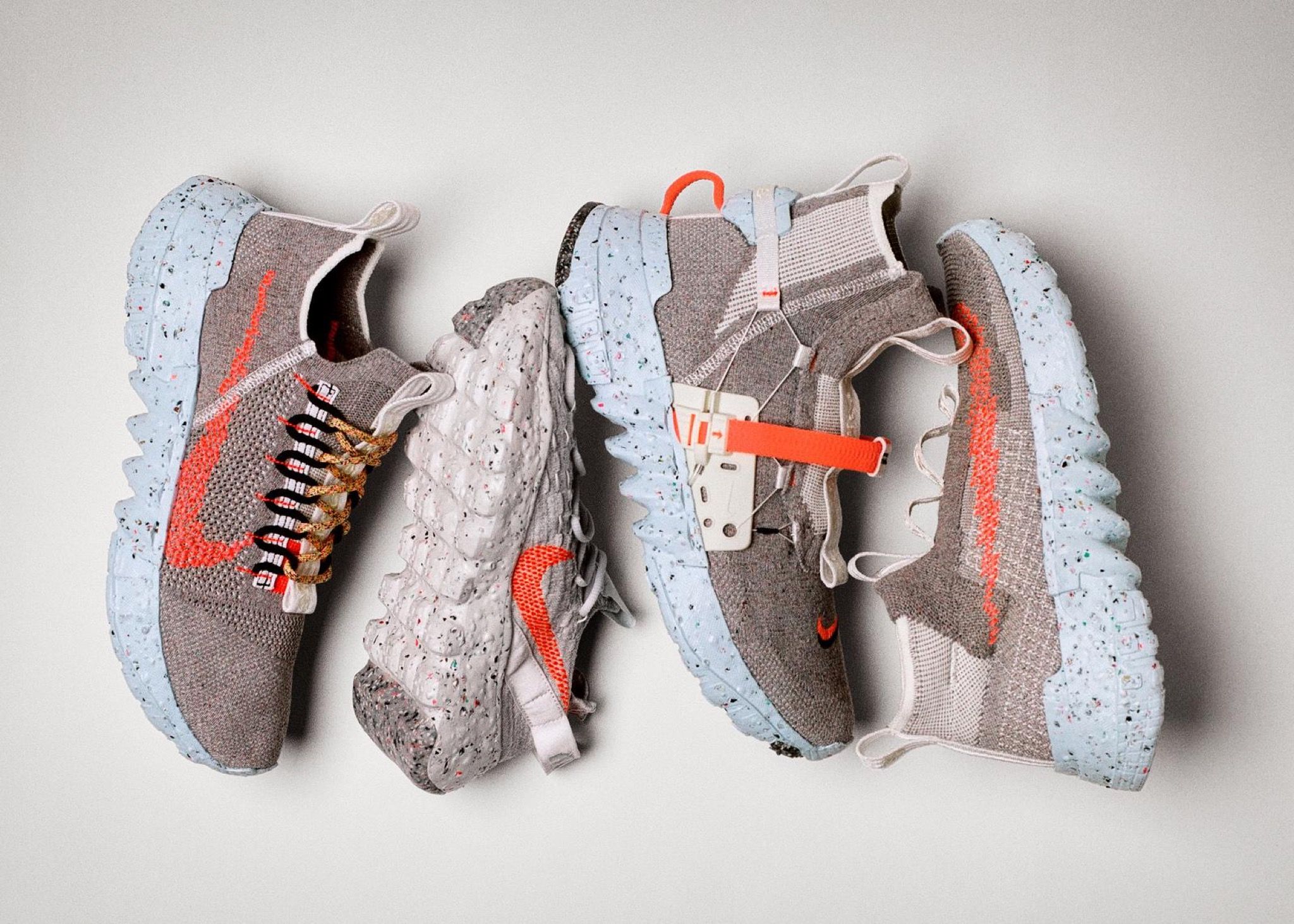
The most surprising success of Nike’s sustainability effort is the degree to which the message has been integrated well beyond its Flyknit and into the very fabric of the brand. Every employee I spoke to, and by no means just the sustainability executives, had internalized the mission, rhetoric, and practices associated with the company’s sustainability goals. “One of the first things we did was really look at how to integrate sustainability within the company structure,” said Kinder, who described a shift from a single sustainability team to multiple ones, installed not just in product creation and innovation, but in logistics and procurement, and soon in retail. As a result, when Nike Japan distribution ditched cardboard outer cartons for reusable totes, the idea took off with other global teams.
Nike’s cooperative spirit is well known as a company strength, of course, and its expanded community was out in full force in New York. The resources required to research, develop, and produce technologies and products on the level described above are obviously attractive to designers working outside of sportswear – namely in luxury fashion. So Nike has its pick of external collaborators. The presentations last week teased Olympic capsules by Yoon Ahn of AMBUSH©, Jun Takahashi of Undercover, Chitose Abe of sacai, Matthew Williams of ALYX, and Virgil Abloh’s Off-White – five “international icons of style” invited to consider the “unifying value of sport as spark of imagination, possibility, and vibrancy.” Each designer is a very contemporary fashion auteur known for his or her own unique relationship to technical clothing and/or streetwear, and was chosen in part for what Hoke described as a shared inquisitive nature and reciprocal creative generosity. “We’re not just asking them to veneer our product,” he assured me. “We want to literally work with them. Because [Nike has] the best designers in the world, and when we pair those designers with really brilliant outside minds and meet them as equals in dialogue, all of us get better.”
Nike’s connections in luxury and fashion have also played out beyond product design and marketing: the brand is a part of the UNFCCC’s Fashion Industry Charter for Climate Action commitment, the Global Fashion Agenda steering committee, and Kering’s G7 Fashion Pact. Such initiatives have to do with “using the power of the collective,” according to Kinder. “A lot of Italian fashion houses sit on [these committees], and they’re in a really different spot than we are. They’re just getting started. It’s [important] for us to be able to bring the decades of history and experience that we’ve had [to the table] – to say, ‘okay, if you really want to make a difference, start here.’” Nike, in other words, likes to share.
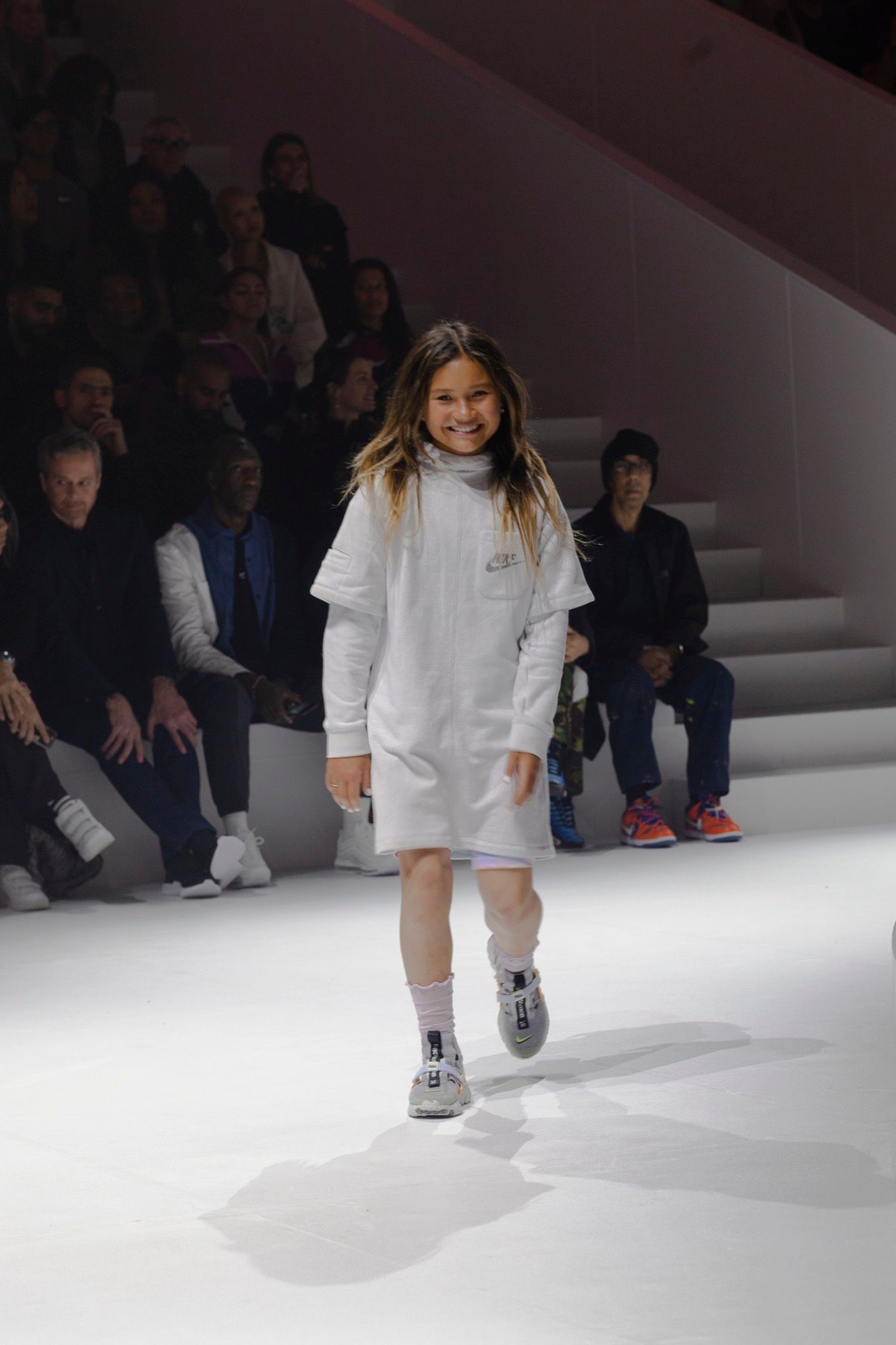
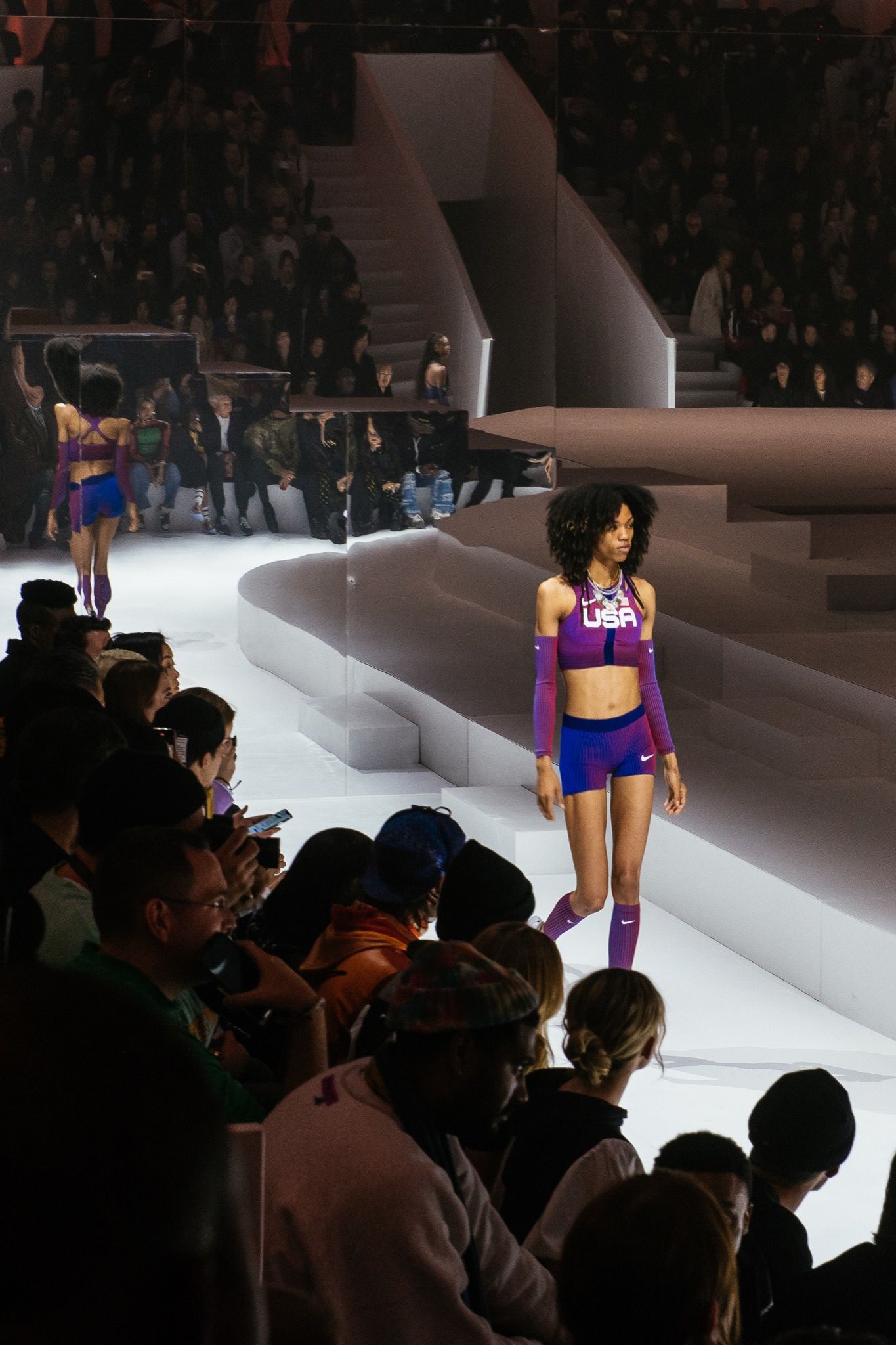
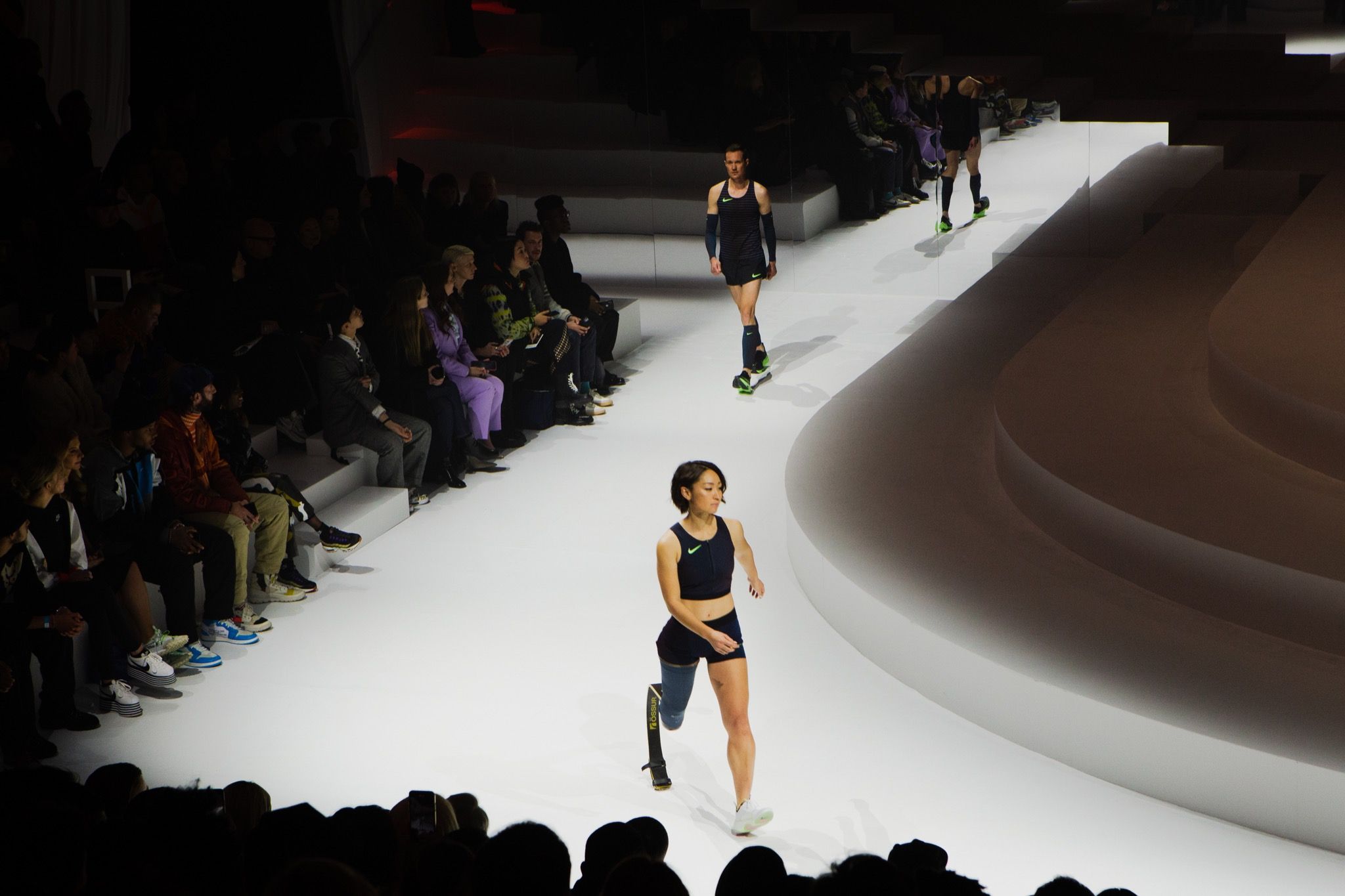
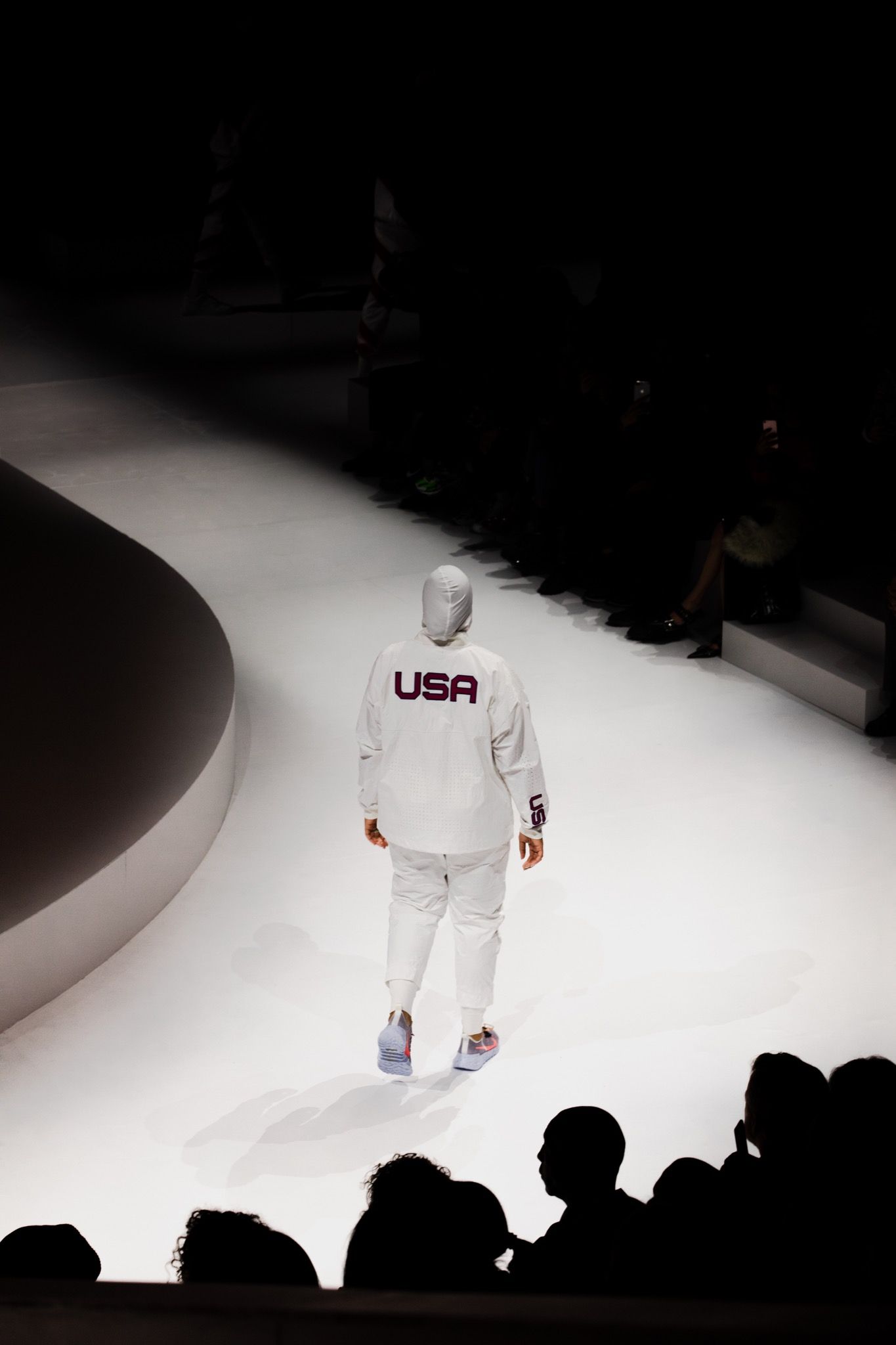
WEAKNESSES
If Nike has successfully shown itself to be the industry leader in performance and sustainability – without one focus compromising the other – it has yet to find a coherent way to talk about the climate crisis it purports to be responding to. Last fall, Nike announced its “Move to Zero” scheme, pledging to power all facilities with 100% renewable energy and operate with net-zero carbon emissions. The term “zero waste” featured heavily in the literature and conversations surrounding last week’s events, too, although unfortunately, this choice of words is at odds with Nike’s celebration of technological innovation through research – of which trial and error, and thus at least some degree of waste, is a natural part. Putting “zero waste” in the mouths of company ambassadors undermines their message of deep, integrated environmental awareness in favor of a trendy formulation, which could make Nike’s commitment to climate response seem more superficial than it is. Similar issues arise with Nike’s relentless pairing of “innovation” and “sustainability,” which are semantically at odds – what we are calling for is radical change, not preservation or maintenance. Most surprising, though, was the positioning of the company’s new raison d’être: to “protect the future of sport” – an uncomfortably defensive phrase from the brand that gave us the gorgeous and limitless imperative, “Just do it.” Talking about “protection” implies a threat, a basis of fear that seems alien to the Nike vocabulary of possibility and human potential, of energy and power.
Nike’s executives all had lucid responses when I flagged these contradictions. Kinder agreed that “we need to reinvent the lexicon a little bit,” and gave context for his own understanding of “sustainability” – a term he first encountered as a Peace Corps volunteer helping with water infrastructure in Central America in the mid-1990s, but that he now finds “amorphous and dated.” “You’d go into towns and work with people to build things, and ‘sustainability’ was about what happened when you left: the community had to be able to maintain it; [the infrastructure] had to stay there if it was going to provide the benefits that we wanted it to provide.” With respect to the troublesome “zero,” Hannah explained that what Nike is really doing in product creation is “thinking about waste as a new resource,” as a useful component within a production philosophy of “circularity.” If that’s the case, there’s no reason the language can’t reflect that, as opposed to reinforcing the recently mainstreamed scarcity mode of panic and imminent loss.
Is it fair to expect Nike, a sportswear company, to innovate how we talk about the environmental crisis? Absolutely. Finding a solution to global warming is something that even Nike can’t “just do,” but if you have the talent and resources to invent a shoe so high-performing that it defies international sports law (and possibly physics), you can tap the talent necessary to have a conversation about language. In fact, if you are Nike, you can lead the discourse by making up your own.
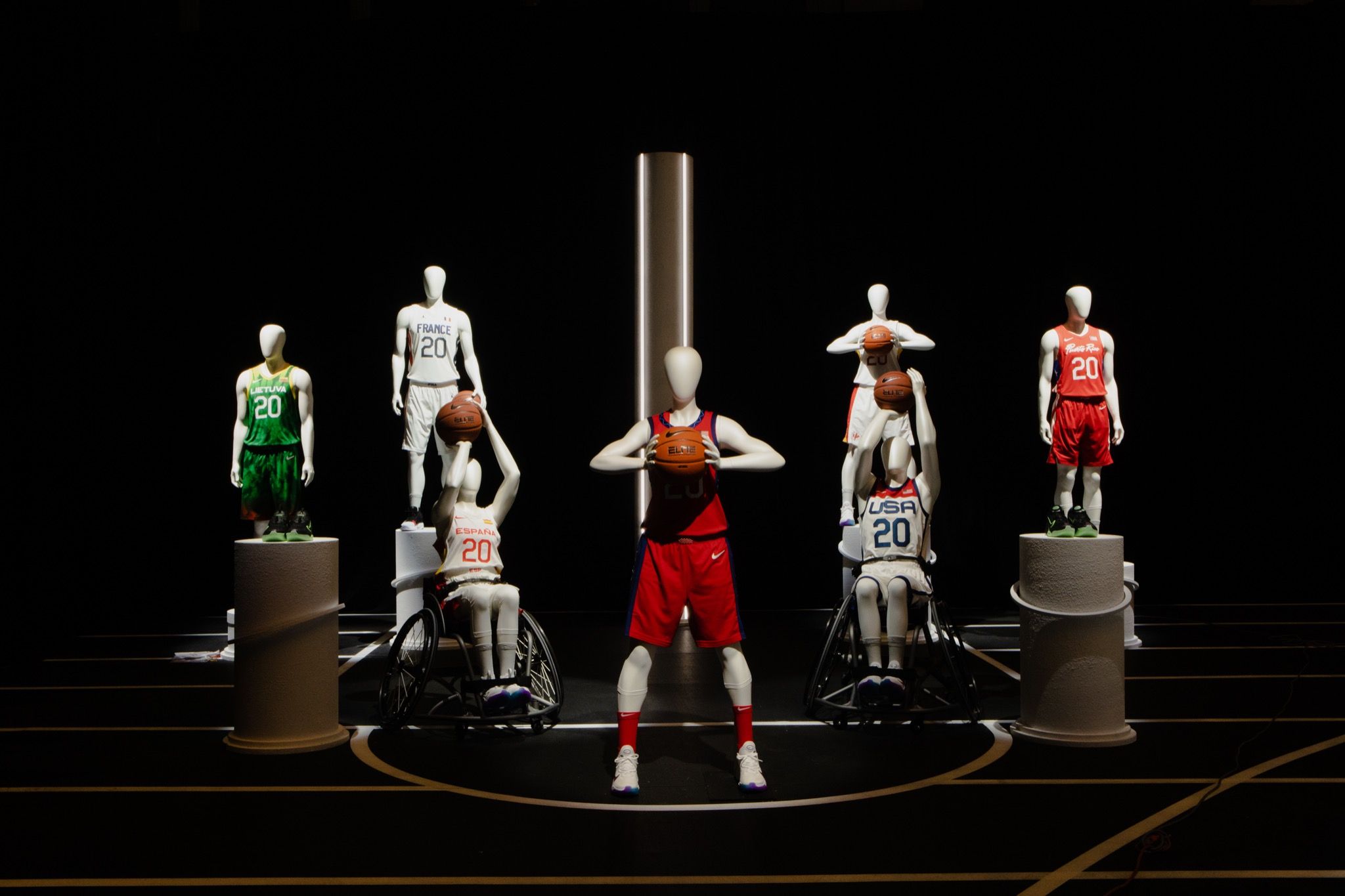
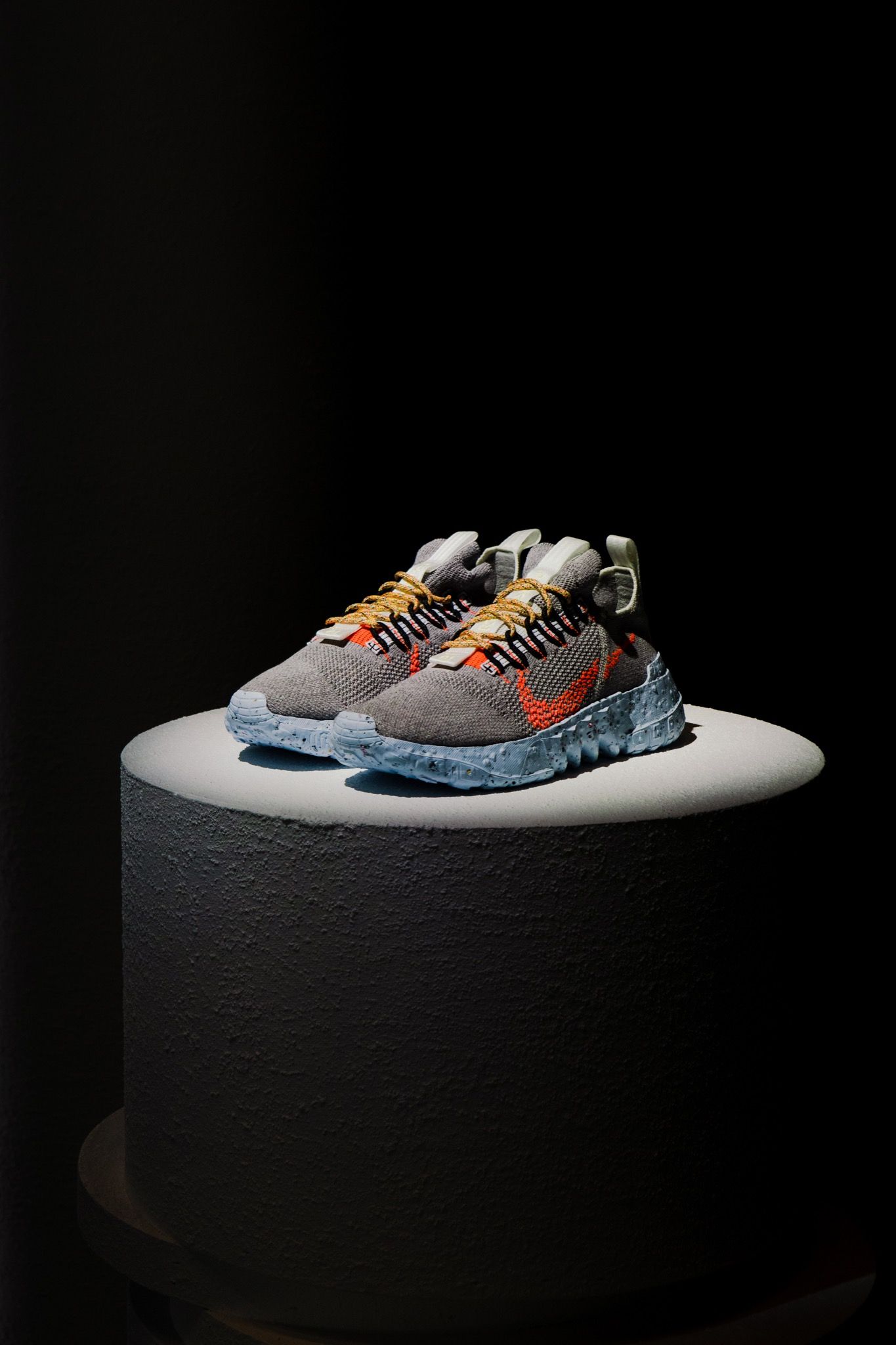
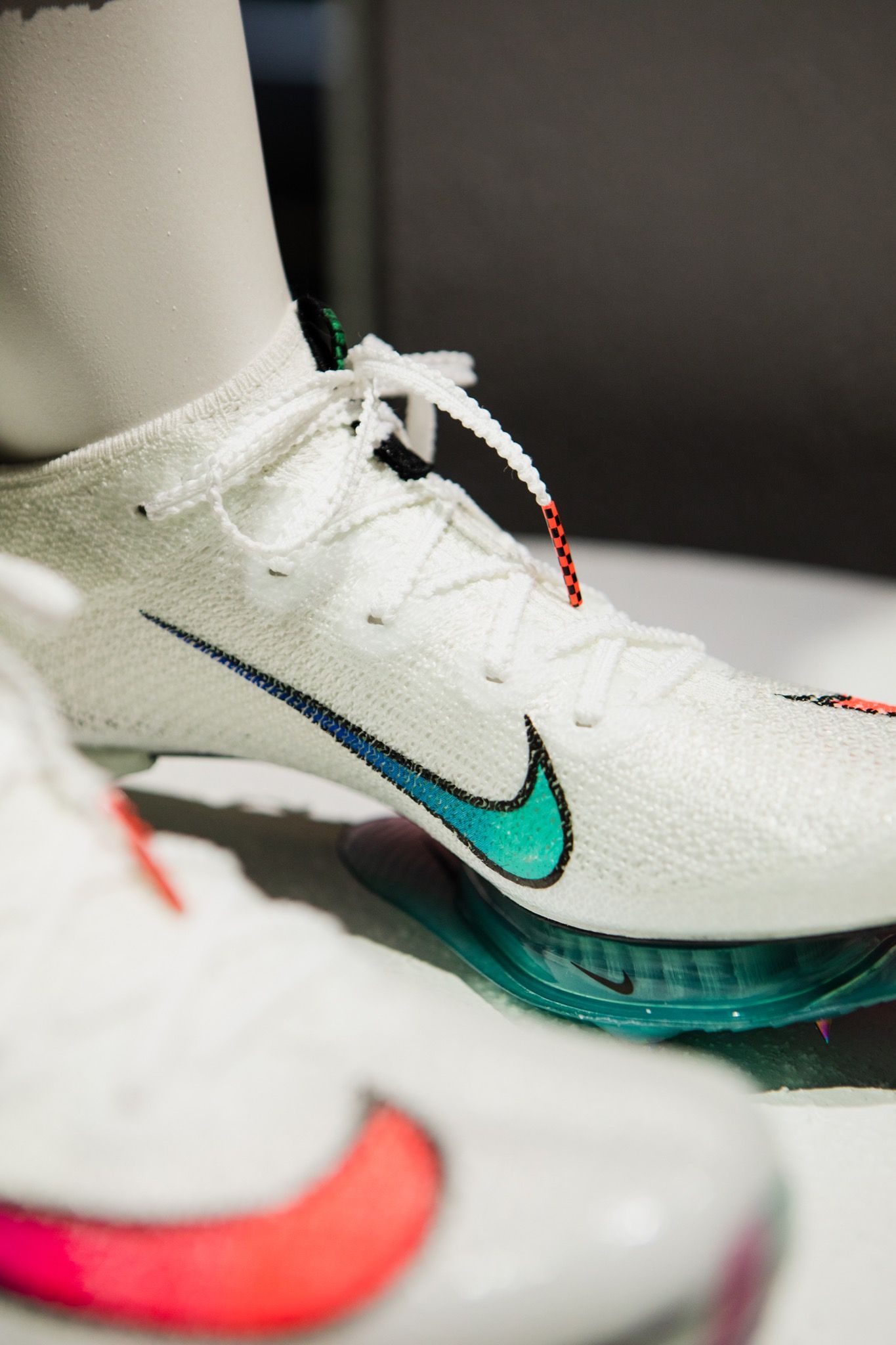
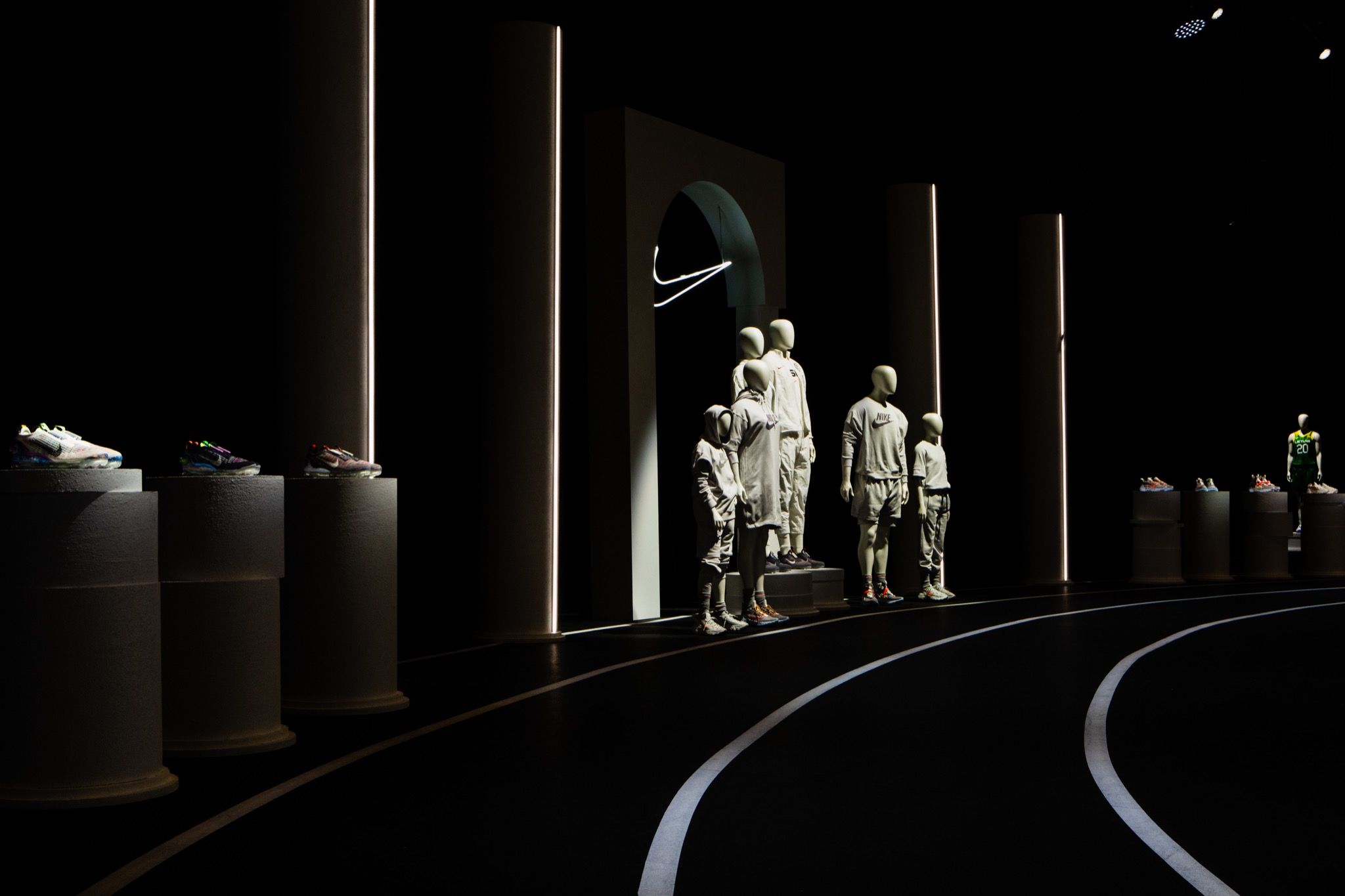
OPPORTUNITIES
The upshot of Nike’s verbal weakness is that it creates an incredible opportunity to develop new ways of thinking about how our world is changing – and thus to provide new tools to respond. Fleshing out the notions of circularity and “waste as resource,” and reframing sustainability as applying to ongoing progress, not products themselves – or doing away with the term entirely – are potential starting points. Other directions emerged in my conversations with Nike leadership as well. One productive distinction touched upon was the difference between adaptability and agility – Kinder prefers the latter. “Adaptability,” he noted, implies a kind of worst-case scenario, an attitude of, “well, the climate’s going to change, so we just have to accept it.” A platform of “agility,” however, is more dynamic, leveraging a sporty vocabulary to reinforce the idea that we can, in fact, flip forward into radically improved modes of production, ways of life, and approaches to shared challenges. Addressing the problem of having to “protect” the future of sport in the face of fearsome catastrophe, Kinder offered the compelling solution of “urgent optimism.” Just because we’ve let the planet enter crisis mode, it says, does not mean we need to lose our heads or get fatalistic. Nike, well versed in messaging around overcoming adversity with poise – and handling stress under pressure – is ideally positioned to cultivate this attitude, which acknowledges both emergency and possibility, and does so clearly.
Most exciting, however, is the nascent opportunity for Nike to make a transition from a platform of competitive advantage, individual triumph, and essentially “winning,” to one of collective action, partnership, and as Hoke put it, “empathy,” which he believes is best cultivated in a climate of valuable difference. “To get to innovation, we need to start with diversity,” Hoke said in discussing Nike’s newest crop of design collaborators. “When you start with people with different perspectives, backgrounds, and experiences – with different voices around the table – it breeds a sense of curiosity. You want to know more. You want to go further. Curiosity is the backbone of empathy. Empathy is the mother’s milk of innovation. And innovation is our advantage.” This diversity-curiosity-empathy-innovation model also hints that we might even relish the opportunity for ongoing learning – that we might enjoy growing from the process of finding solutions, despite (or because of?) the urgency of this work.
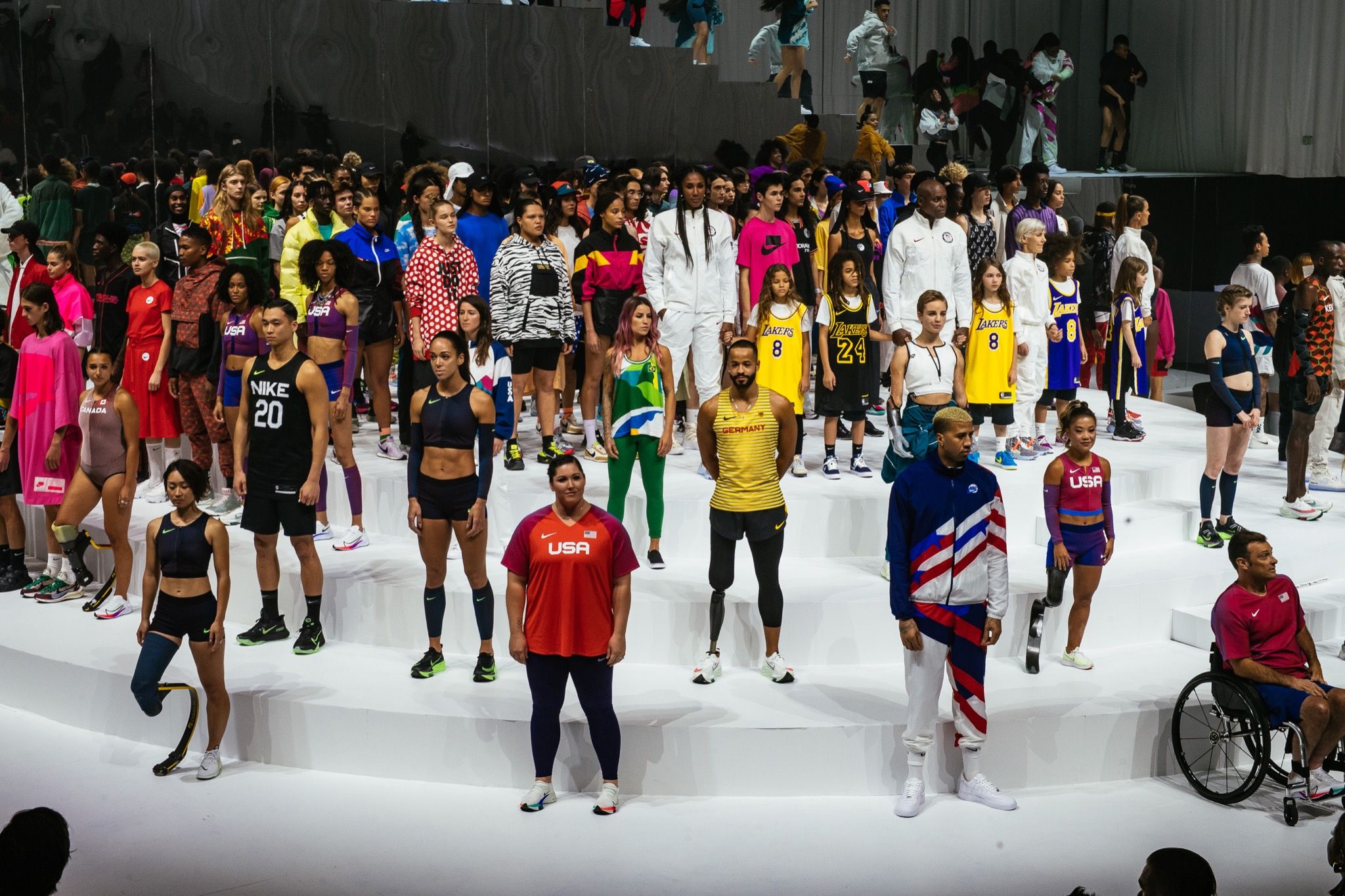
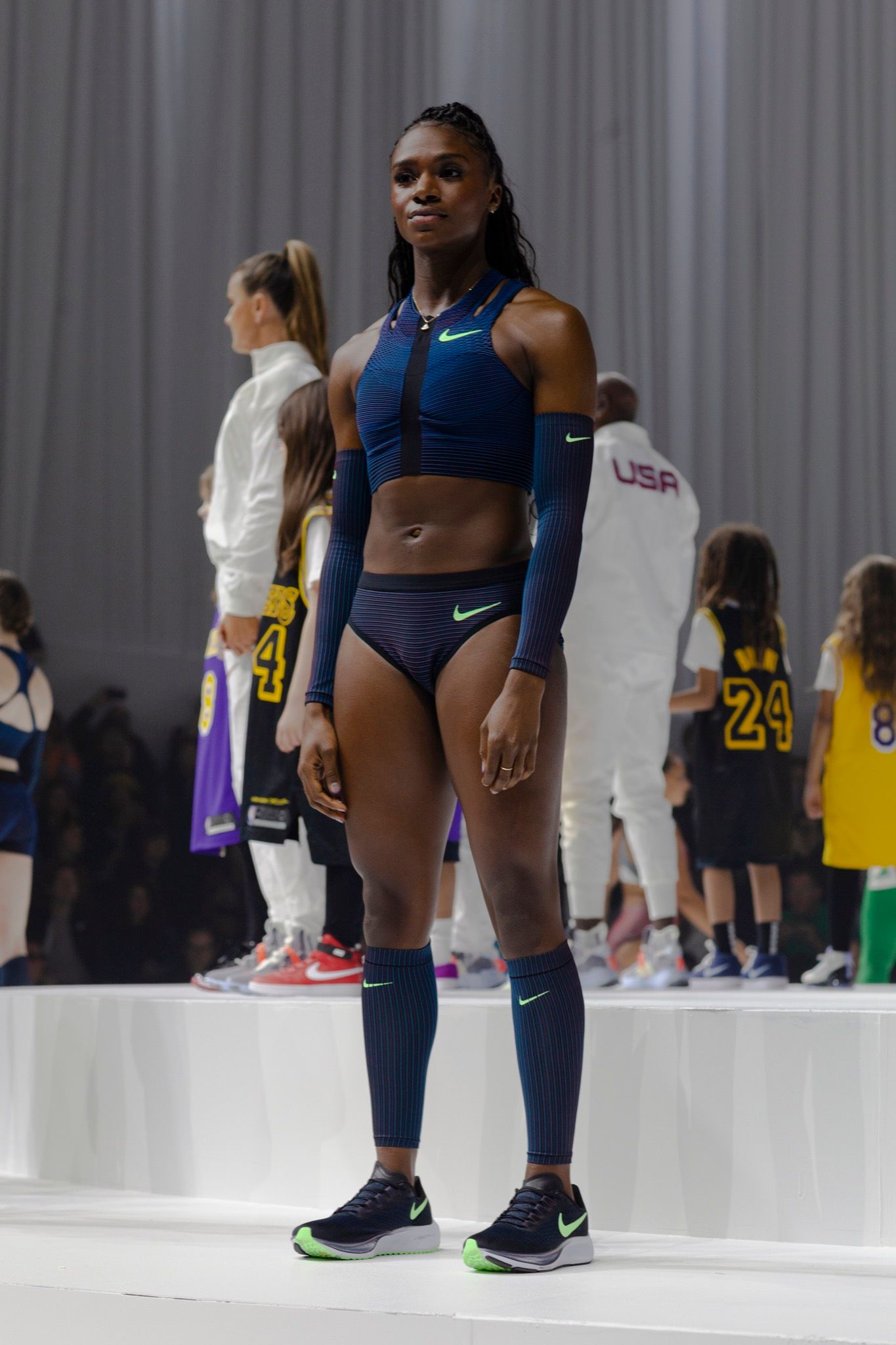
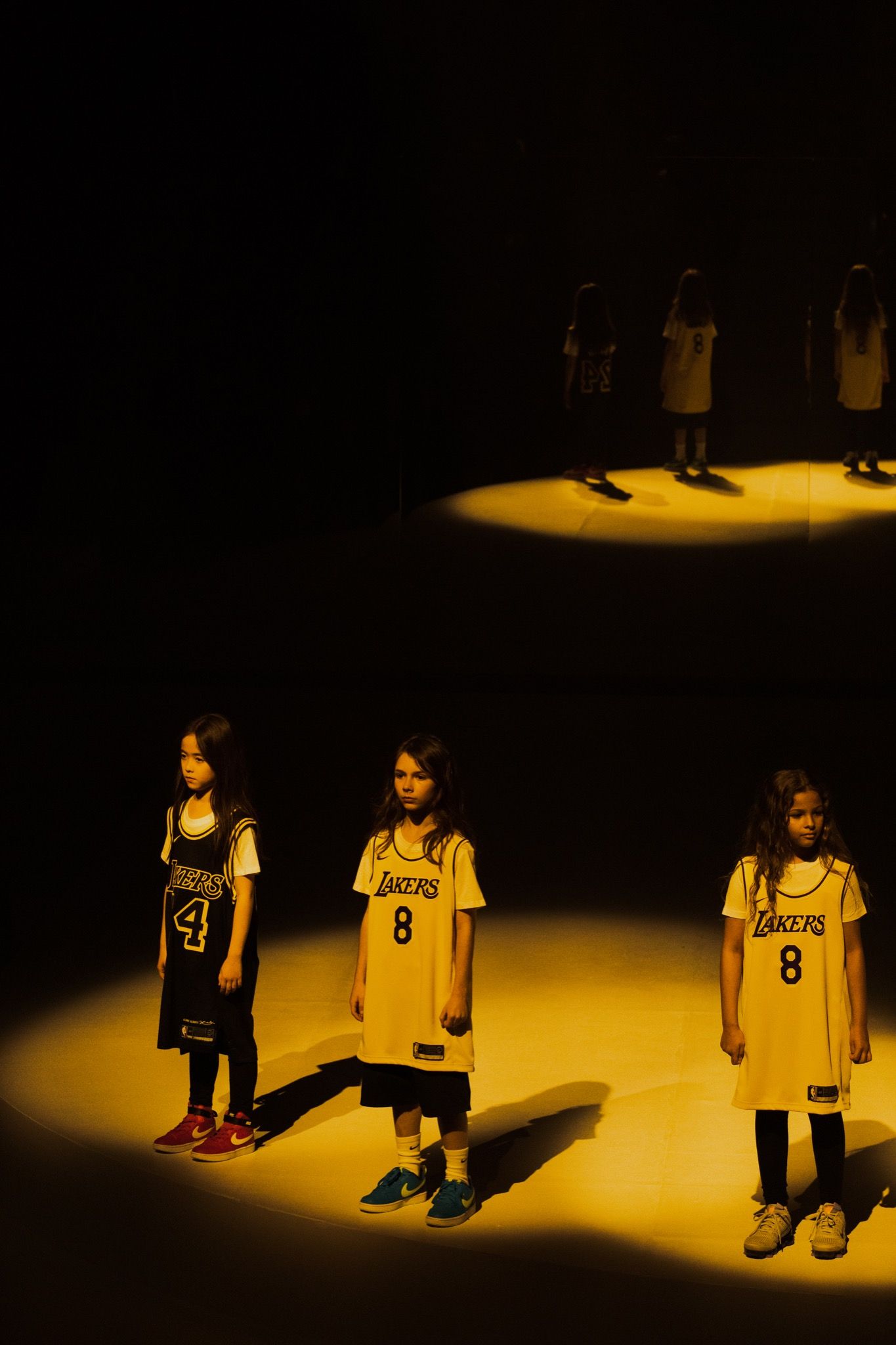
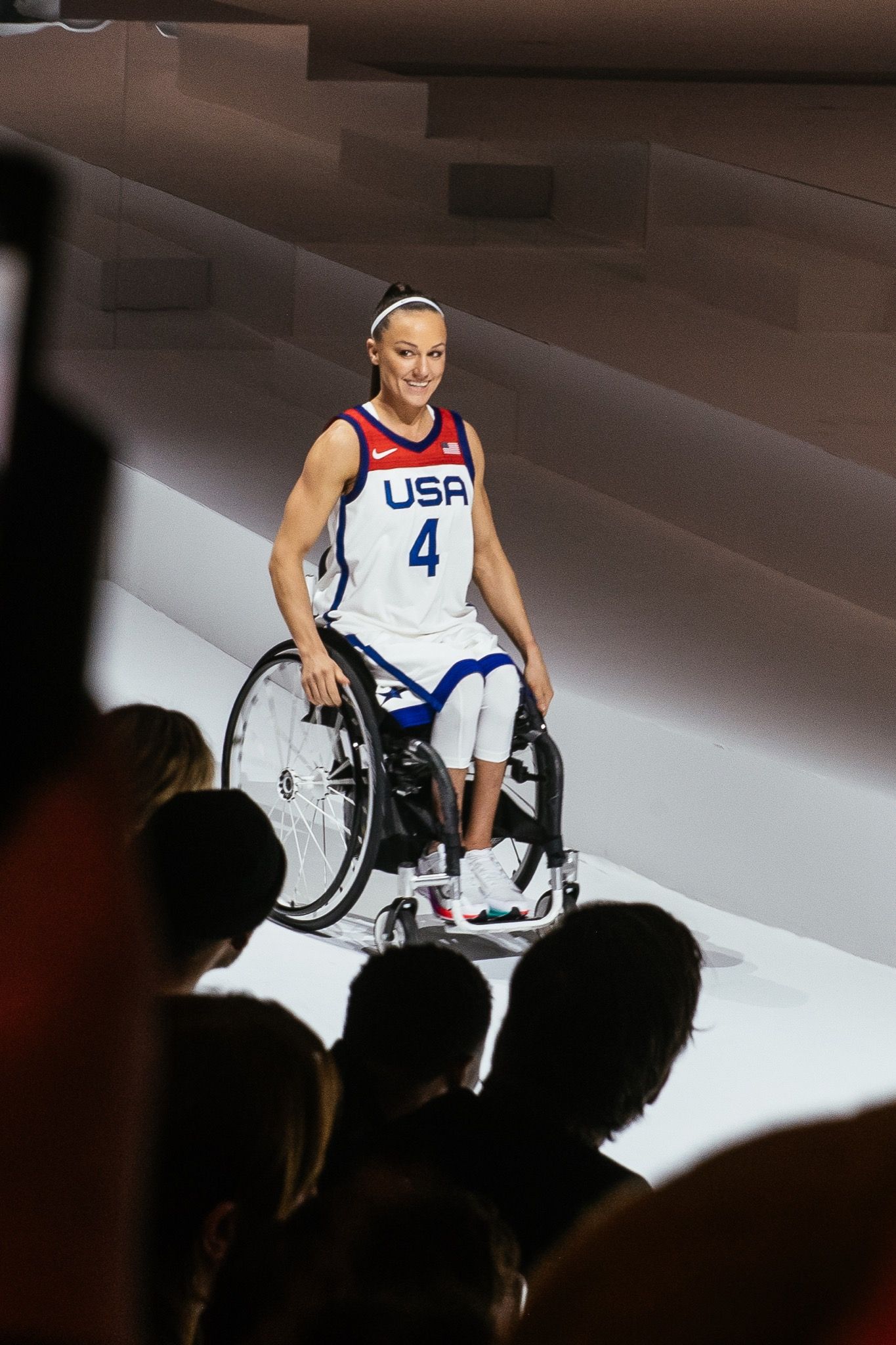
“Today, the data driving Nike R&D isn’t obtained by monitoring athletes’ body temperatures in climate-controlled workout chambers. It is obtained by monitoring carbon emissions in the global context of climate change.”
Last week, Nike spotlighted the power of the collective with a runway show that, by most accounts, left the audience feeling “emotional.” “I had goosebumps,” Hoke recalled. “We’re lucky, because sports does kind of hit you in the chest, and there’s a level of unscripted joy and drama.” Relating to consumers by pulling their heartstrings is a longstanding strategy for Nike, frequently deployed in introspective and/or cinematic ad campaigns. Remember Michael Jordan reflecting on personal failures in the 1990s, or that regular guy sweating it out to “find his greatness” in the early 2010s? Even when sport has been positioned as a means to ignite a collective feeling, to invite a community to stand together, that connection has been mitigated by a singular athlete-hero (or, in the case of Charles Barkley’s controversial 1993 “I am not a role model” spot, an anti-hero). Yet the presentation at the Shed offered no such individual – a true departure for a brand so adept at utilizing athlete personas when communicating sharable sentiment. Even the tribute to Kobe Bryant, for which children appeared on stage wearing Lakers jerseys, subtly effaced the recently deceased NBA champion, dispersing – perhaps strategically – his identity into the crowd.
This shift of focus from the individual to the collective is not only evident in Nike’s marketing strategy and expanding base of collaborators, but is present in its innovation labs – in the earliest stages of product development. When 032c covered Matthew Williams’ work with NikeLab in 2018, the focus was on data technology, namely on how information gathered from athletes made its way from the lab into the product. Today, however, the data driving Nike R&D isn’t obtained by monitoring athletes’ body temperatures in climate-controlled workout chambers. It is obtained by monitoring carbon emissions in the global context of climate change. Across the brand, a sense of the world has replaced the cult of the self.
In 2020, the Olympic Games, with their doctrine of global unity, provide an explicit platform for this thinking in marketing and communications. Yet what is more interesting is the space they create to explore the message through product design. Nike has already jumped in ahead of Tokyo. Dressing an athlete bound for the “middle stand,” according to Hoke, means equipping them for performance, but also for representing their team, family, community, nation, humanity, etc. “We’re no longer just wrapping an athlete in the national flag,” he explained. “We want to do a deep curation, a deep appreciation. That’s a next level of thinking that goes deeper and further to connect emotional design to its user, to the audience, and to an entire community that is watching.” After the Games, however, Nike will have the opportunity – or be challenged – to develop the voice of the collective without the convenient umbrella of the Olympic ethos. The company has not yet reached the limits of its exploration of collaboration – “there’s no finish line,” right? – so it would be a shame to see the hero return as soon as all the Nike-sponsored athletes pick up their gold medals.
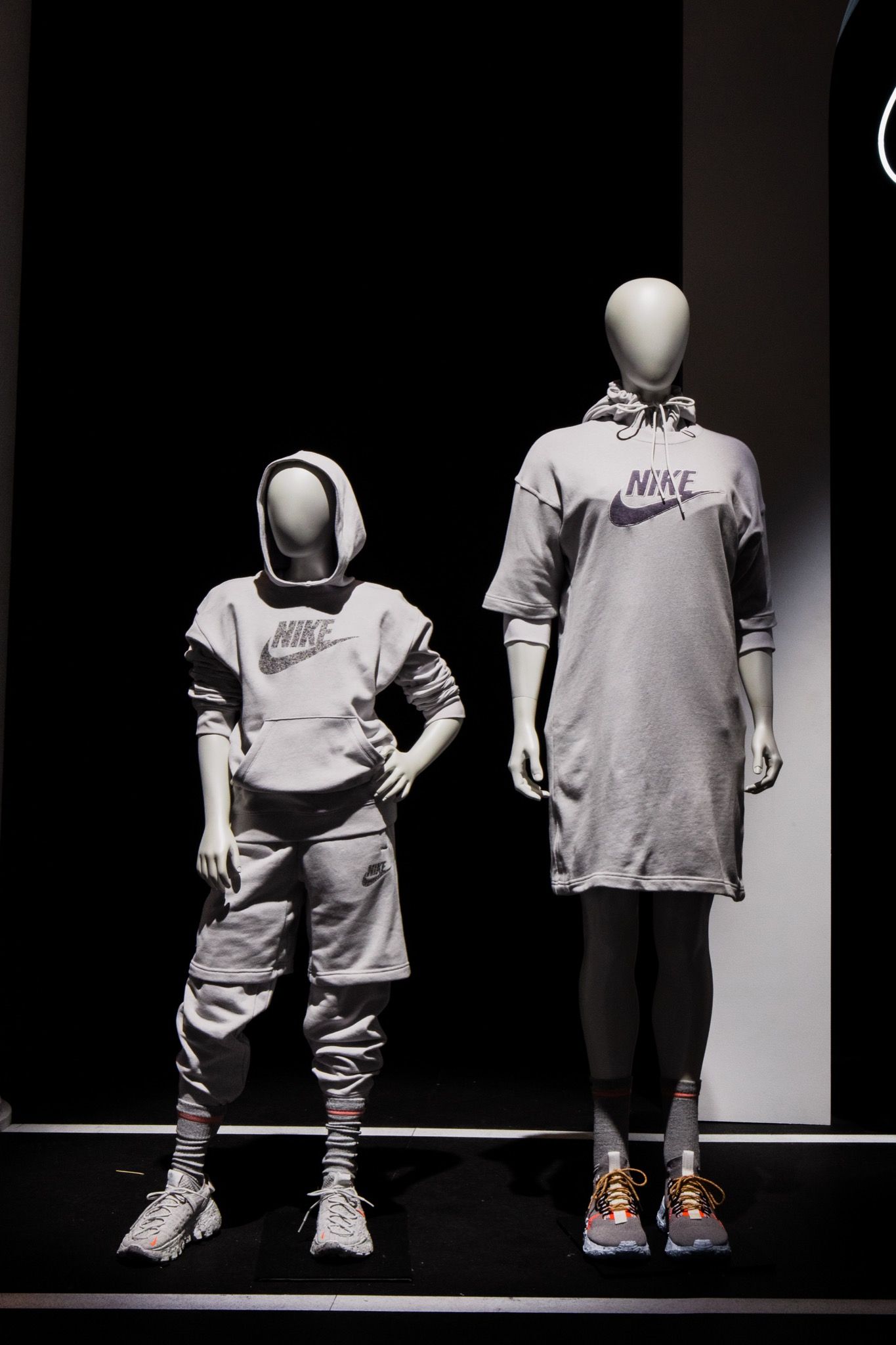
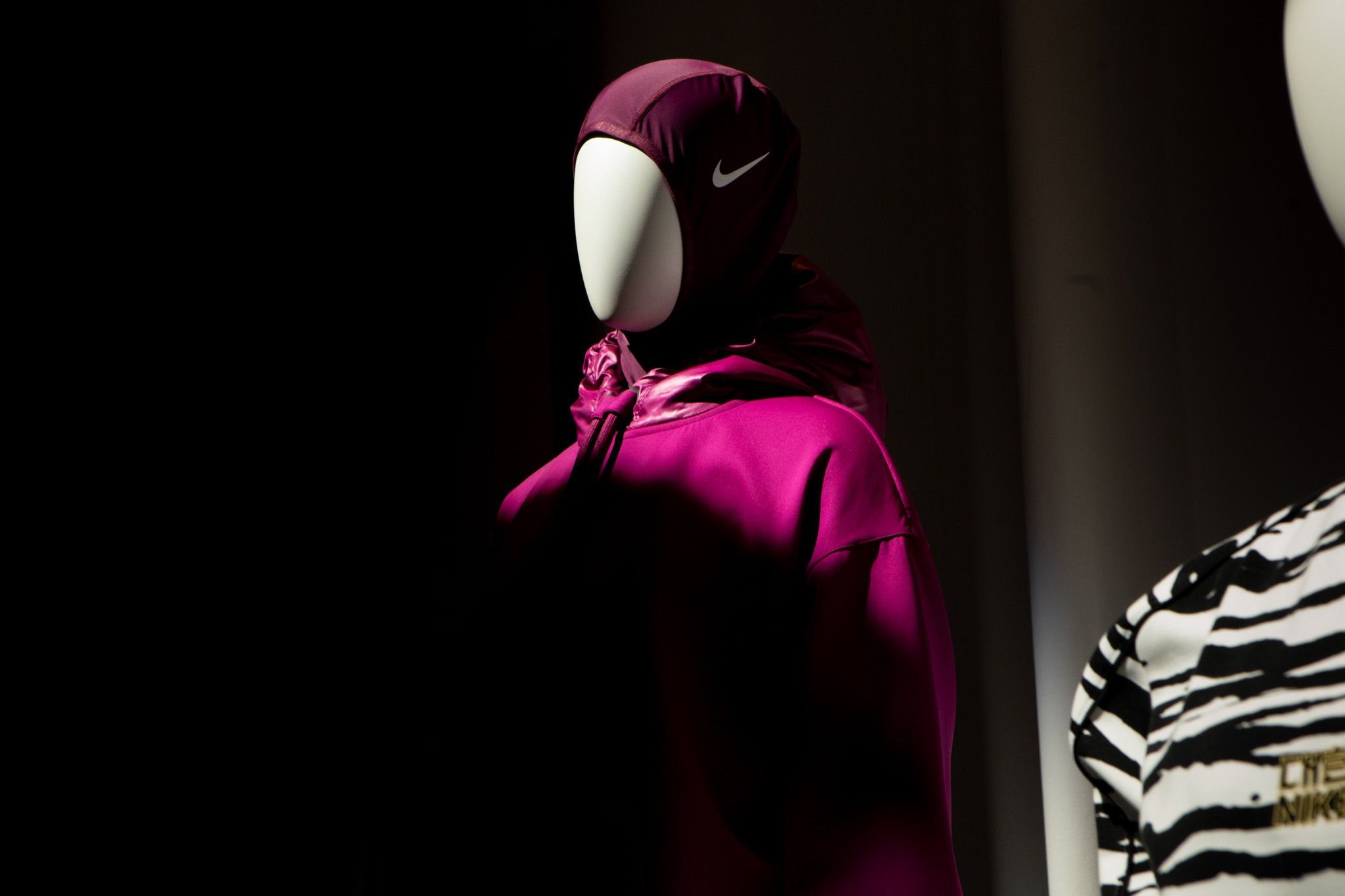
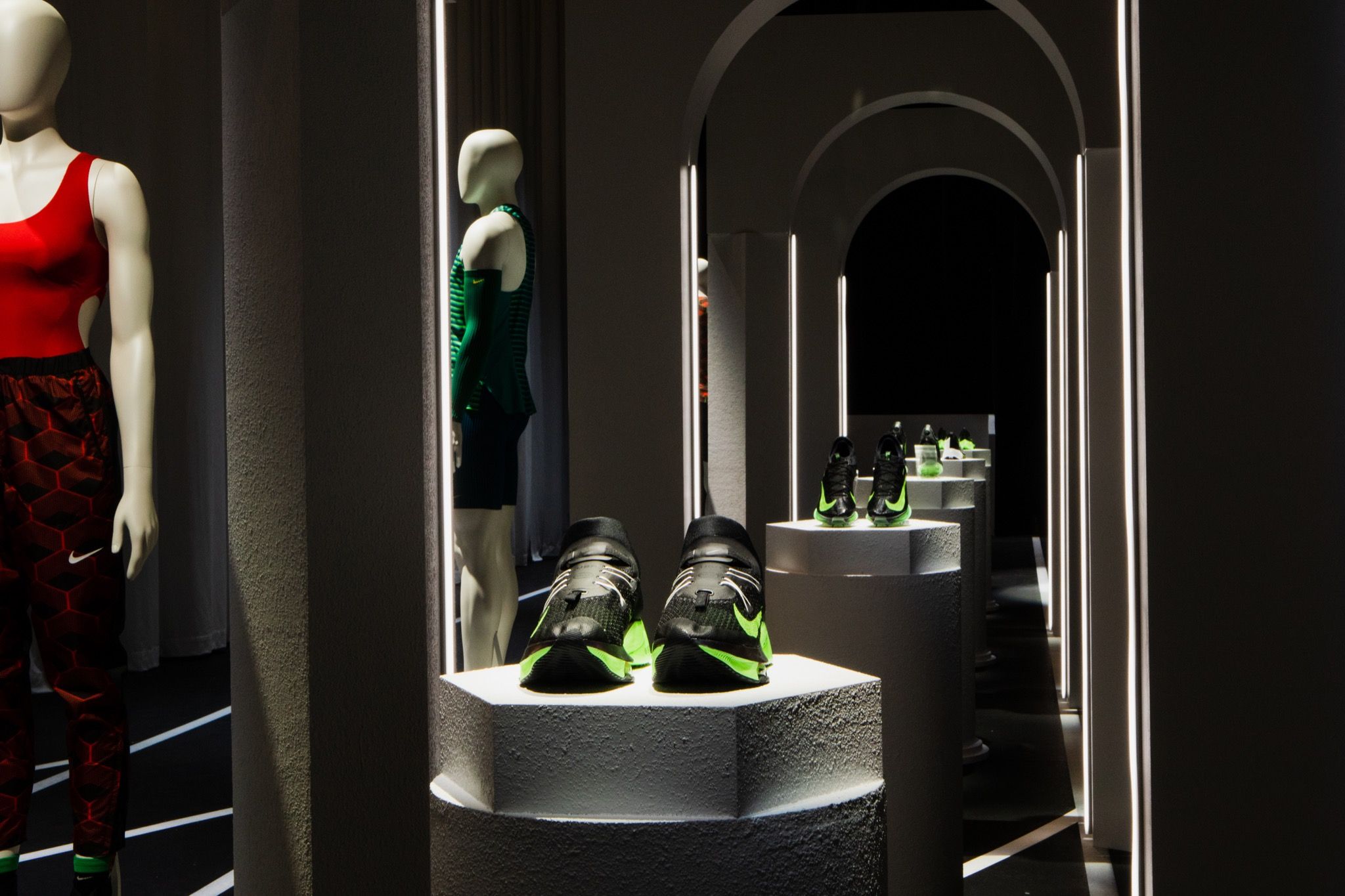
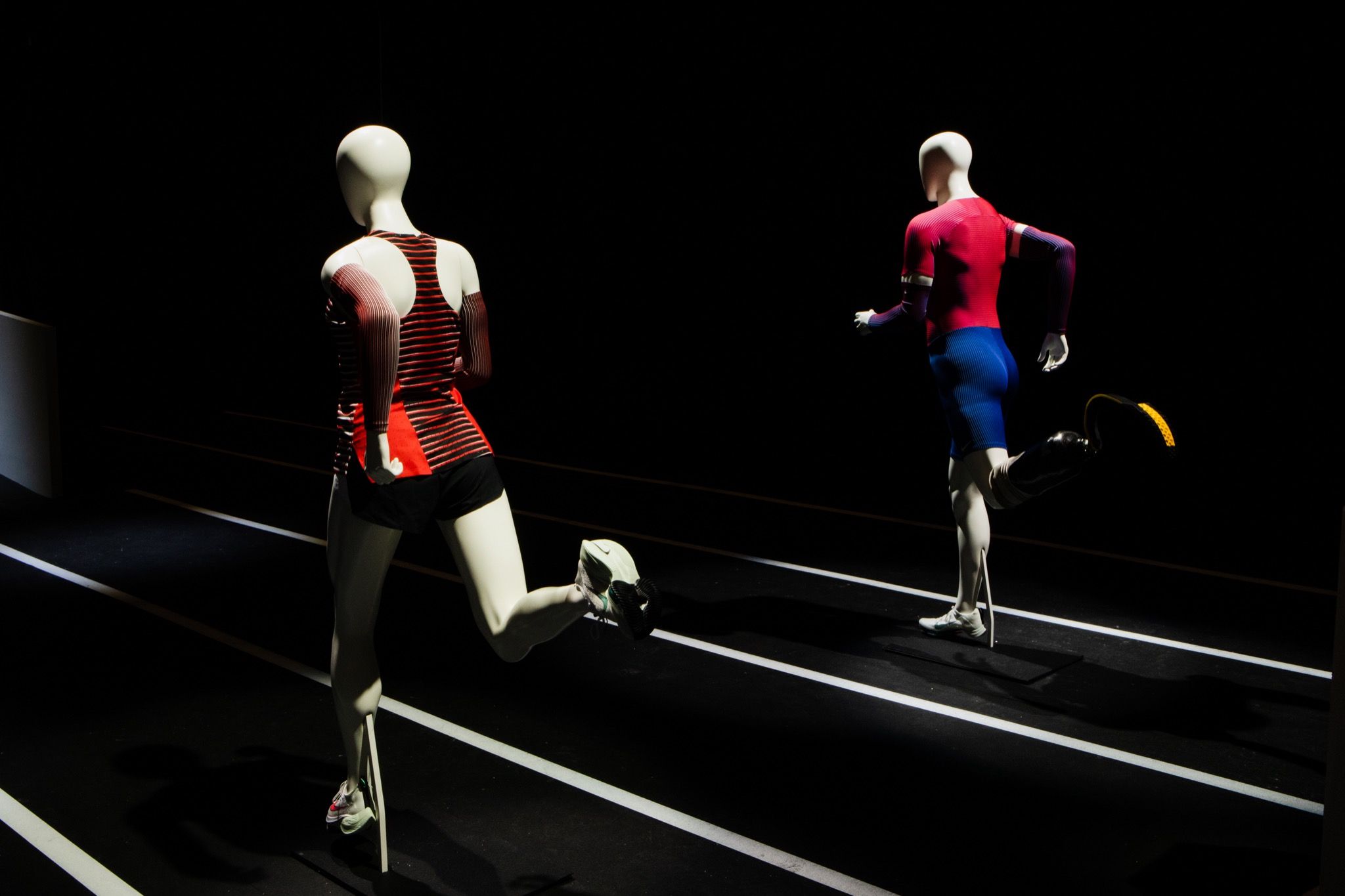
“What’s threatening Nike in 2020 is what’s threatening everything else: the death, by fire, of the entire fucking planet.”
THREATS
In 2016, the late, great Gary Warnett’s Nike SWOT analysis cited the brand’s business competitors as primary threats. These included the now slumping Under Armour, which was operating under a slogan that basically called Nike slow, and adidas – another Olympic sponsor, then buoyed by new Boost technology and an unstoppable partnership with Kanye West. (Full disclosure: 032c has been an adidas footwear and apparel partner since 2018.) Nike may not have Kanye, but it’s got everyone Kanye’s ever worked with, and I think we agreed to leave rivalry in the last decade, at least for now. What’s threatening Nike in 2020 is what’s threatening everything else: the death, by fire, of the entire fucking planet.
Cynically, there is a sinister opportunity in that fact: for Nike to let go of the “future of sport” and start making products for the future of the worst scenario. By extension, Nike’s biggest threat is itself. If things get ugly, will the company regress its public image back to what it was decades ago, a big bad machine of capitalist pollution? Not if Nike is remotely as committed to developing, and particularly to sharing resources as the brand says it is.
When I asked Nike executives what was making them the most anxious lately, several brought up their kids. Discussing his son’s climate anxiety, one asked: “How do you instill, like, ‘Hey, we get to write how this ends’?” He could tell his son the good news: if Nike doesn’t have an innovation team working on that exact question right now, it will very soon.
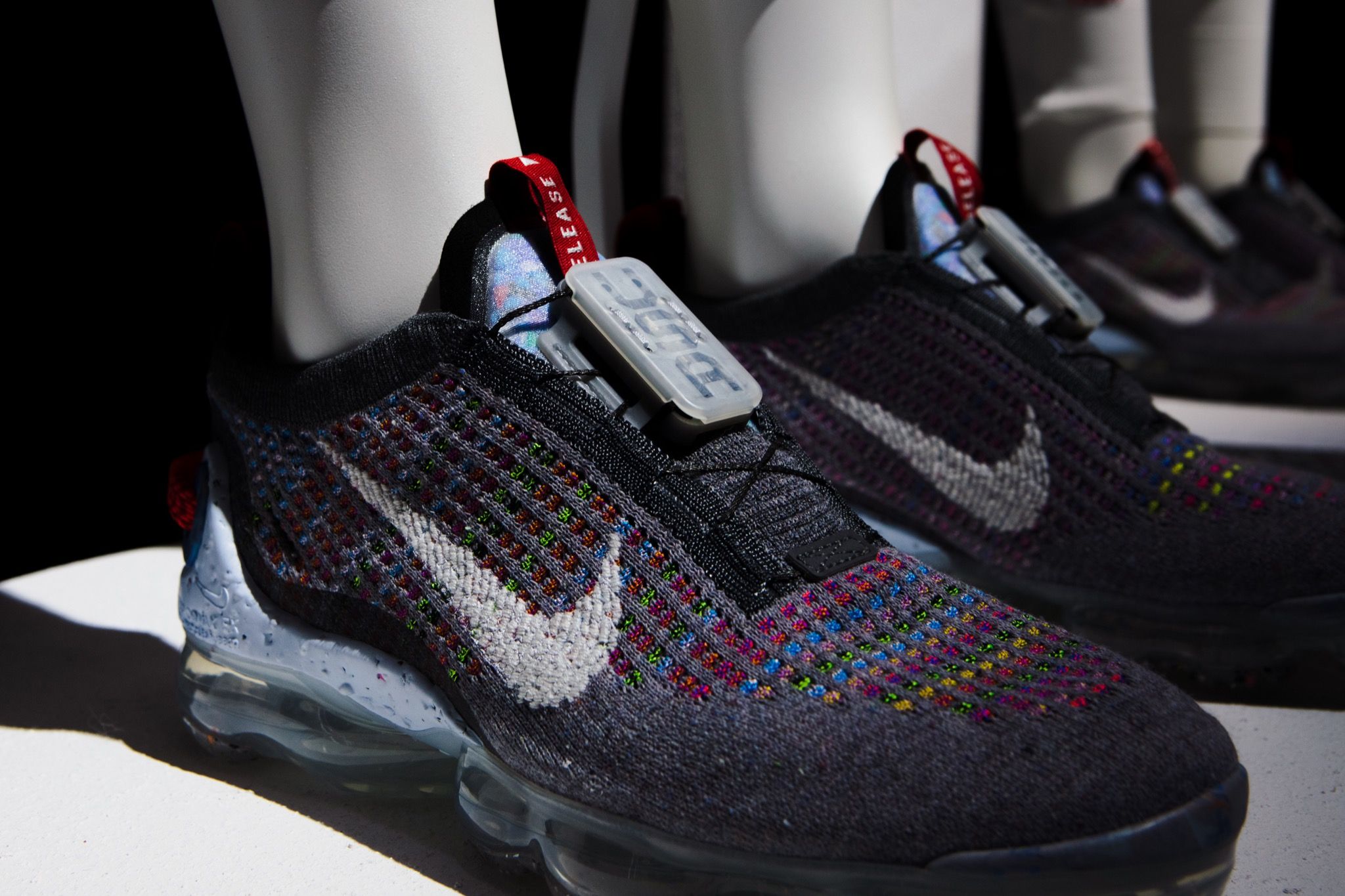
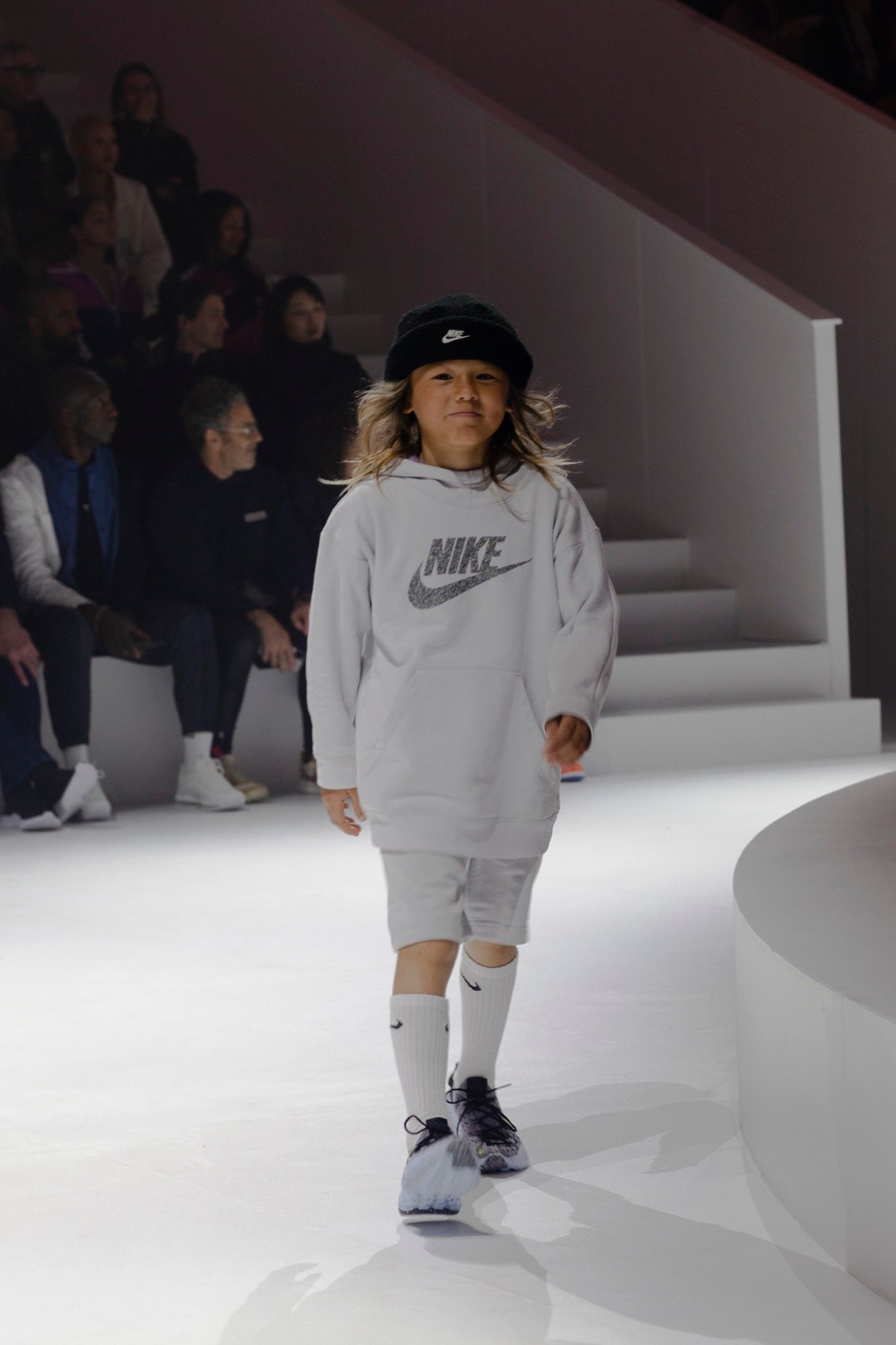
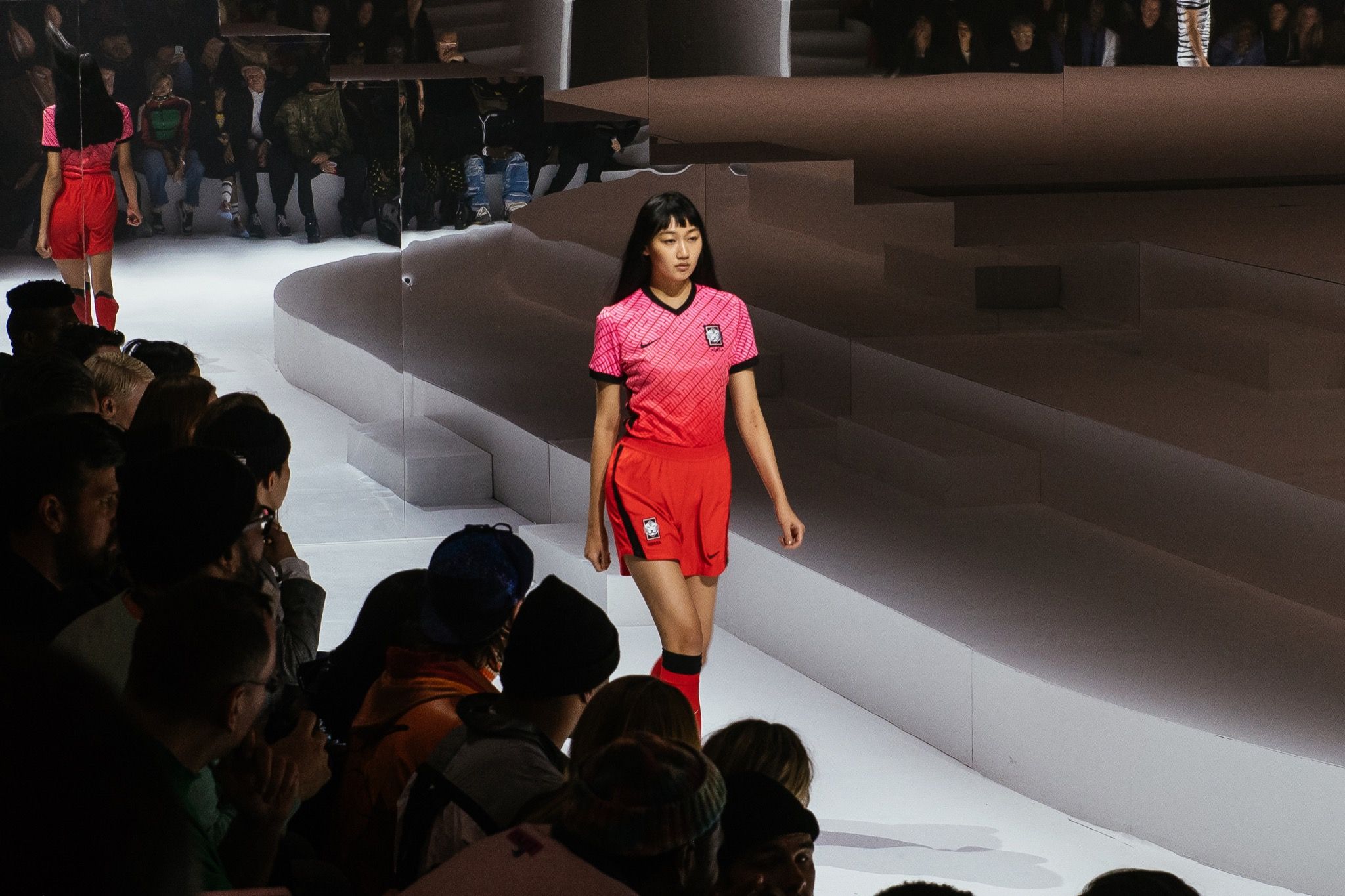
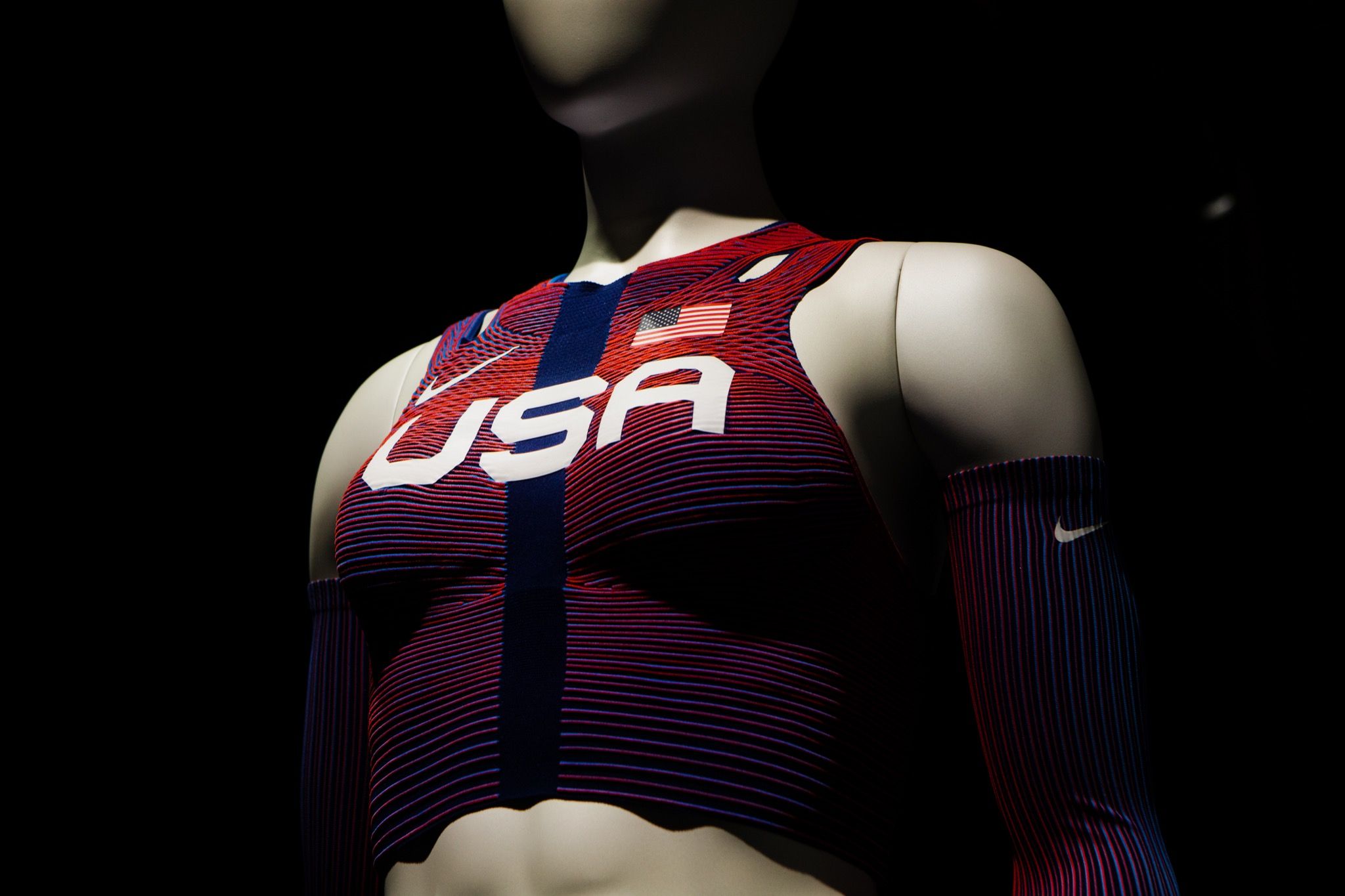
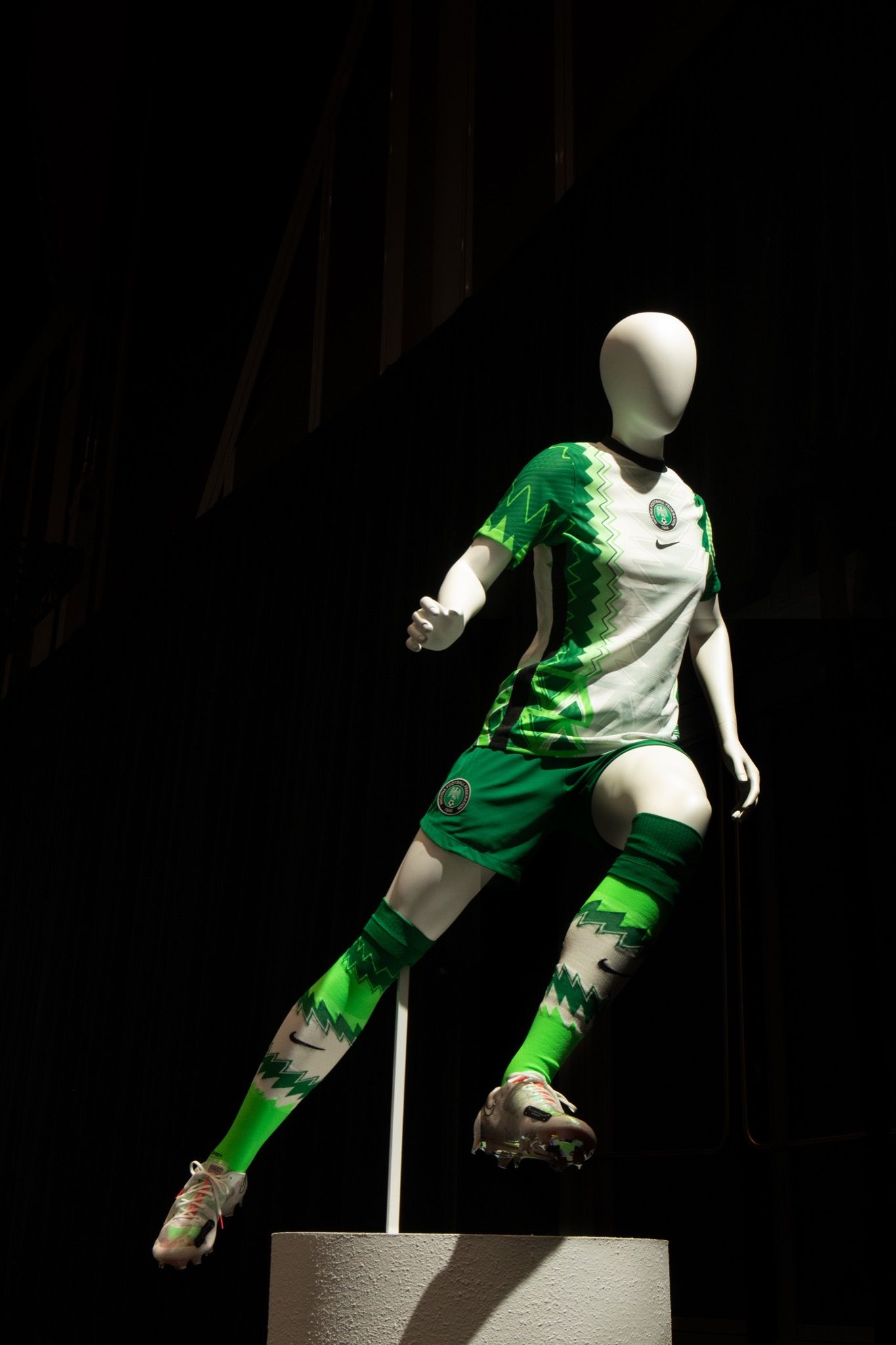
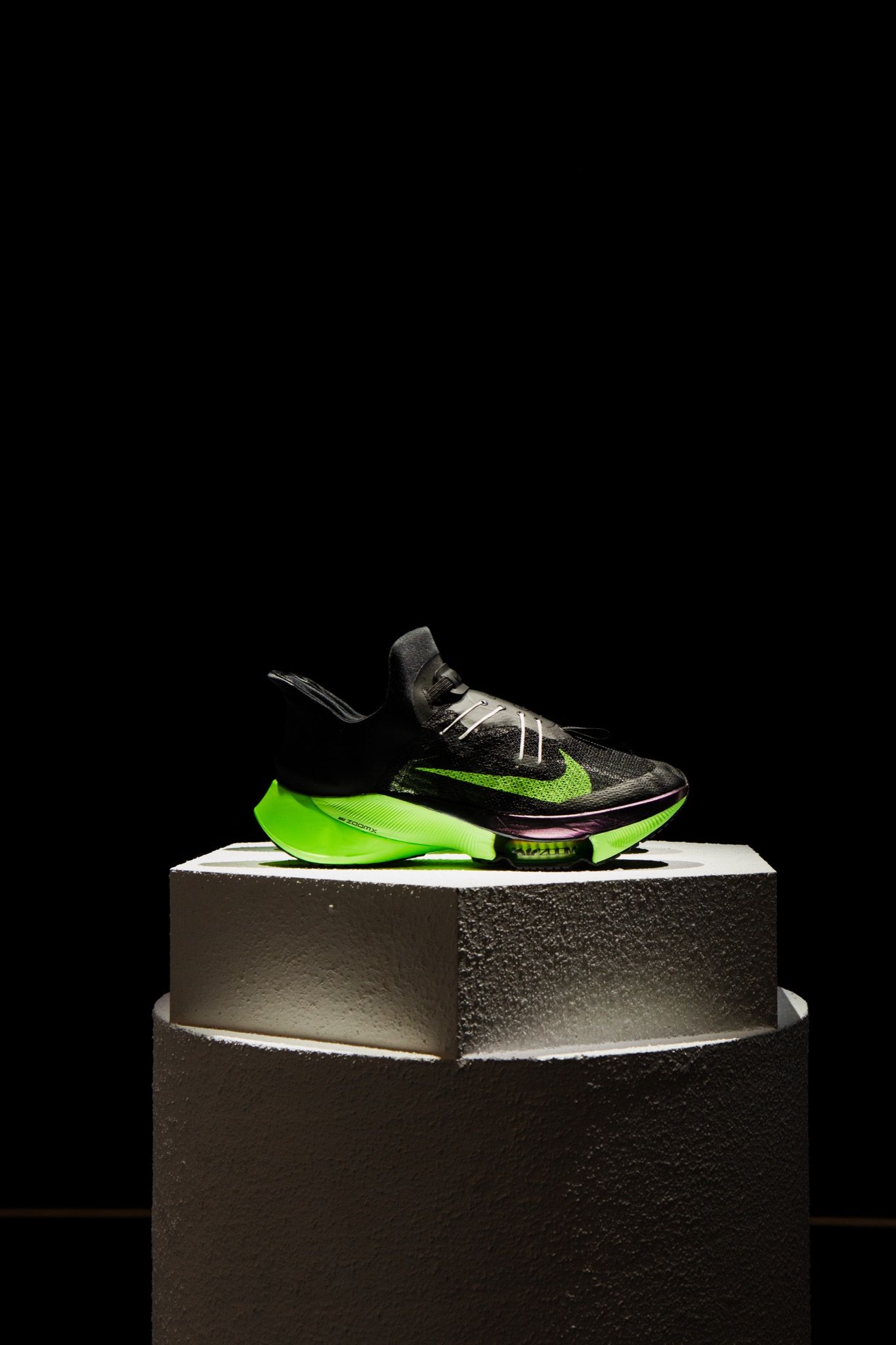
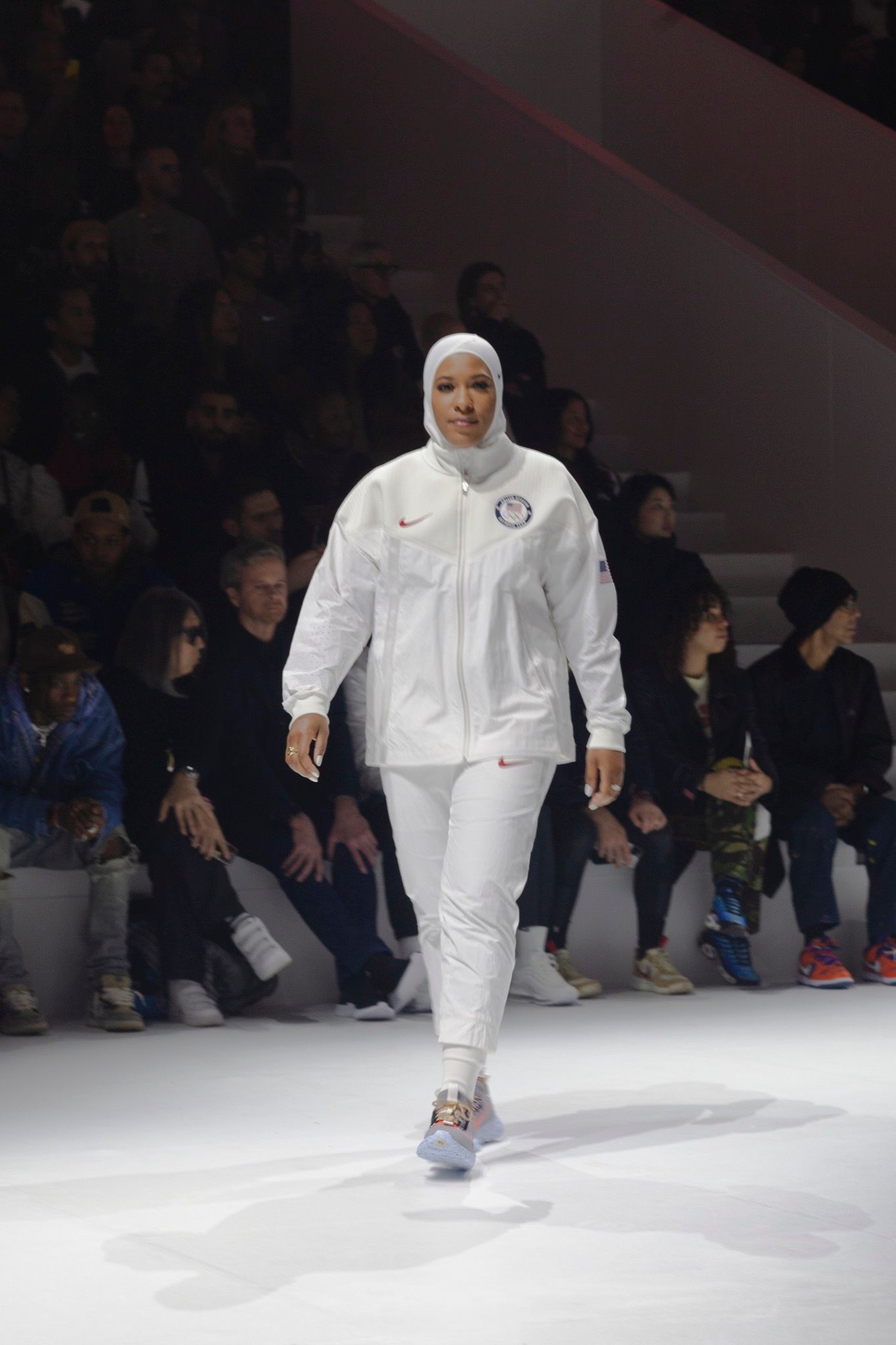
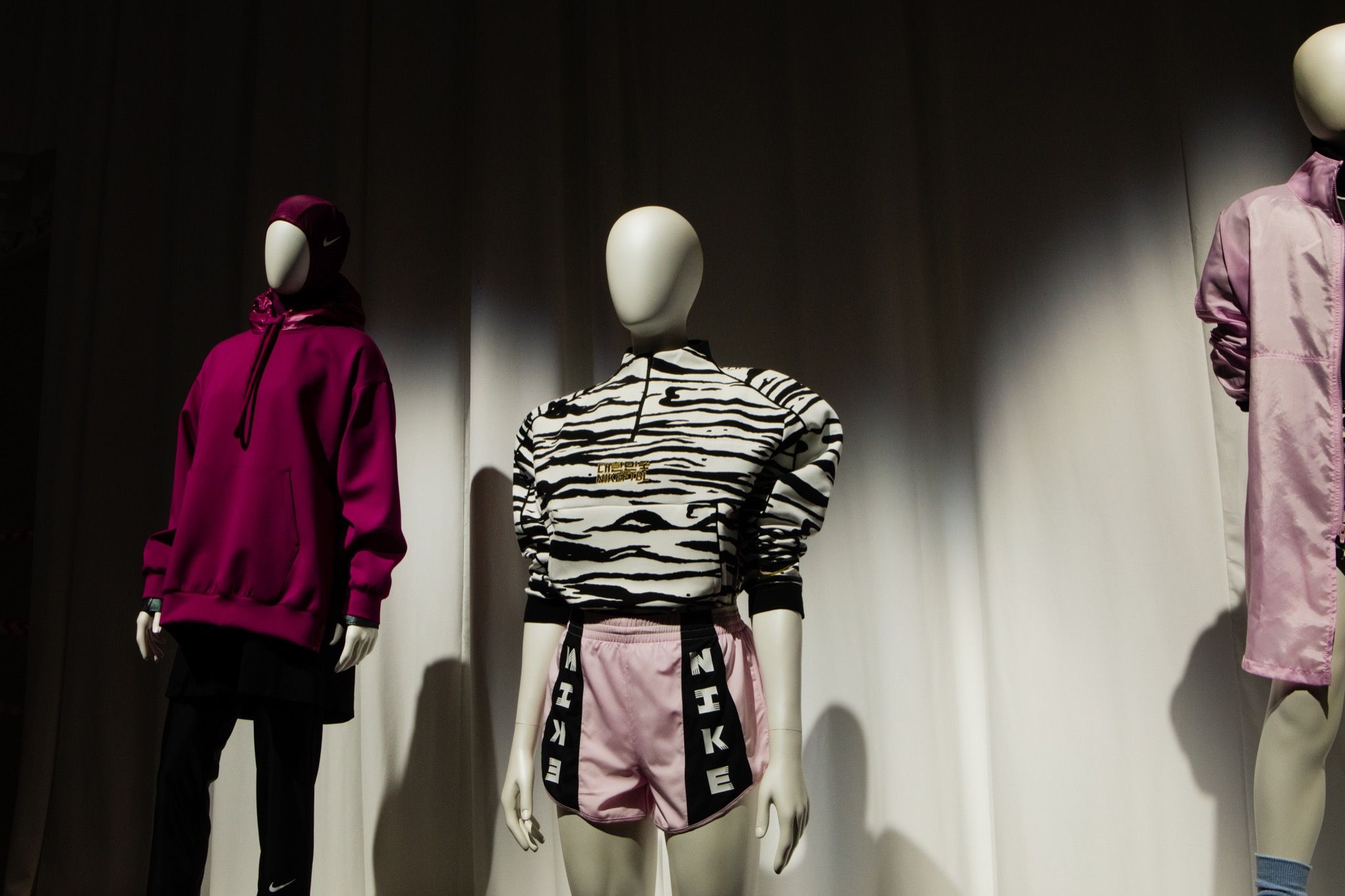
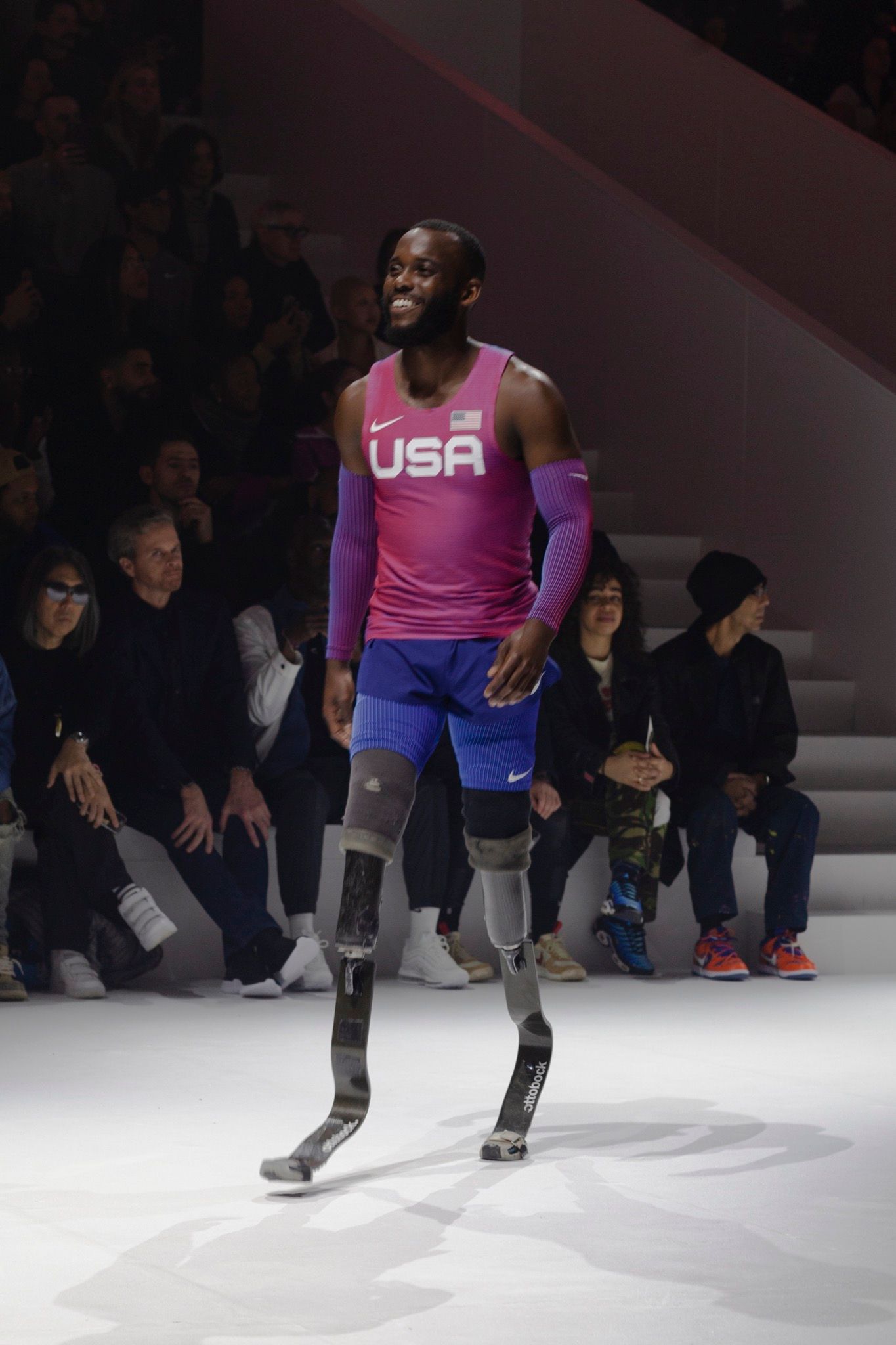
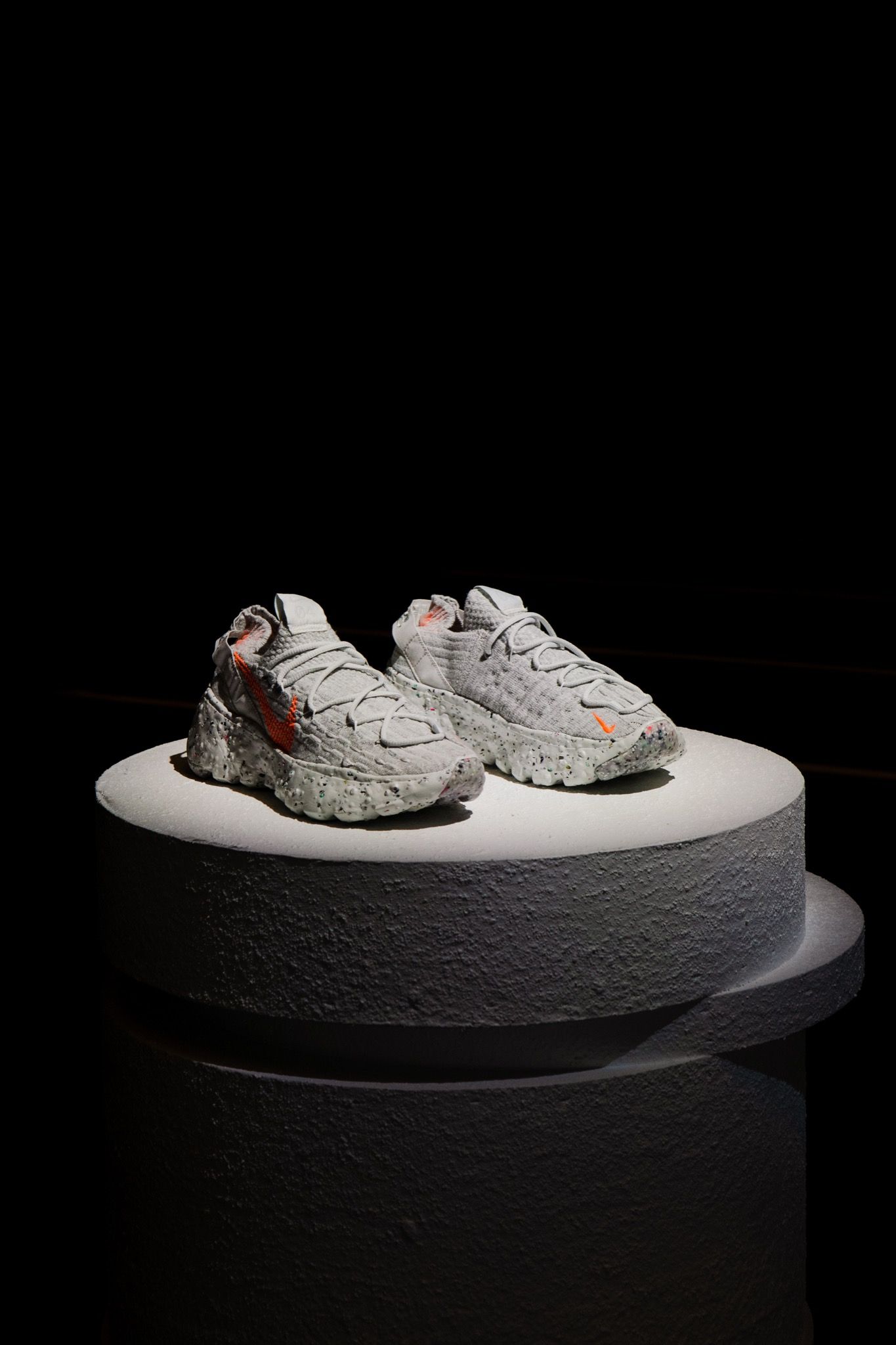
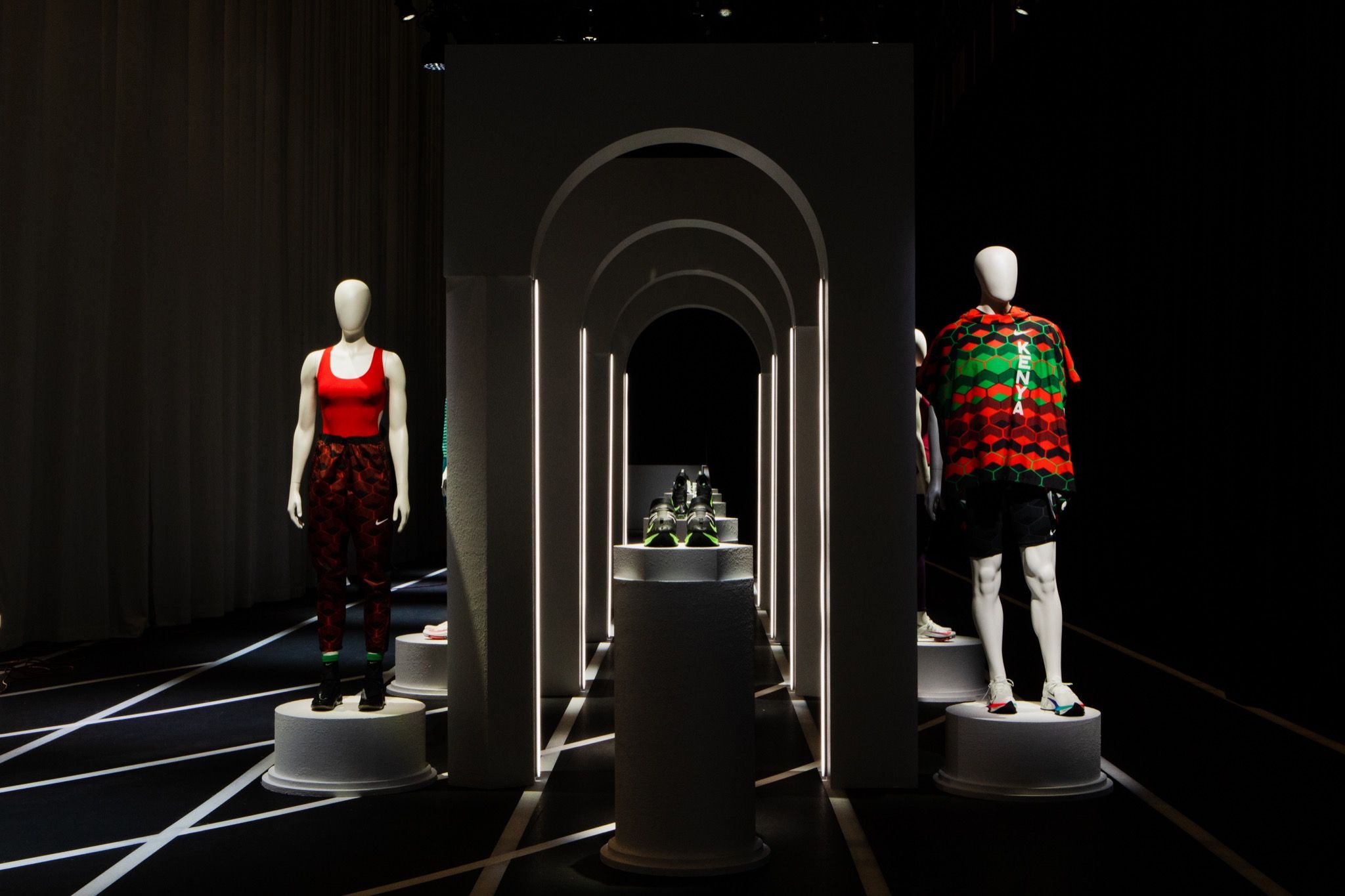

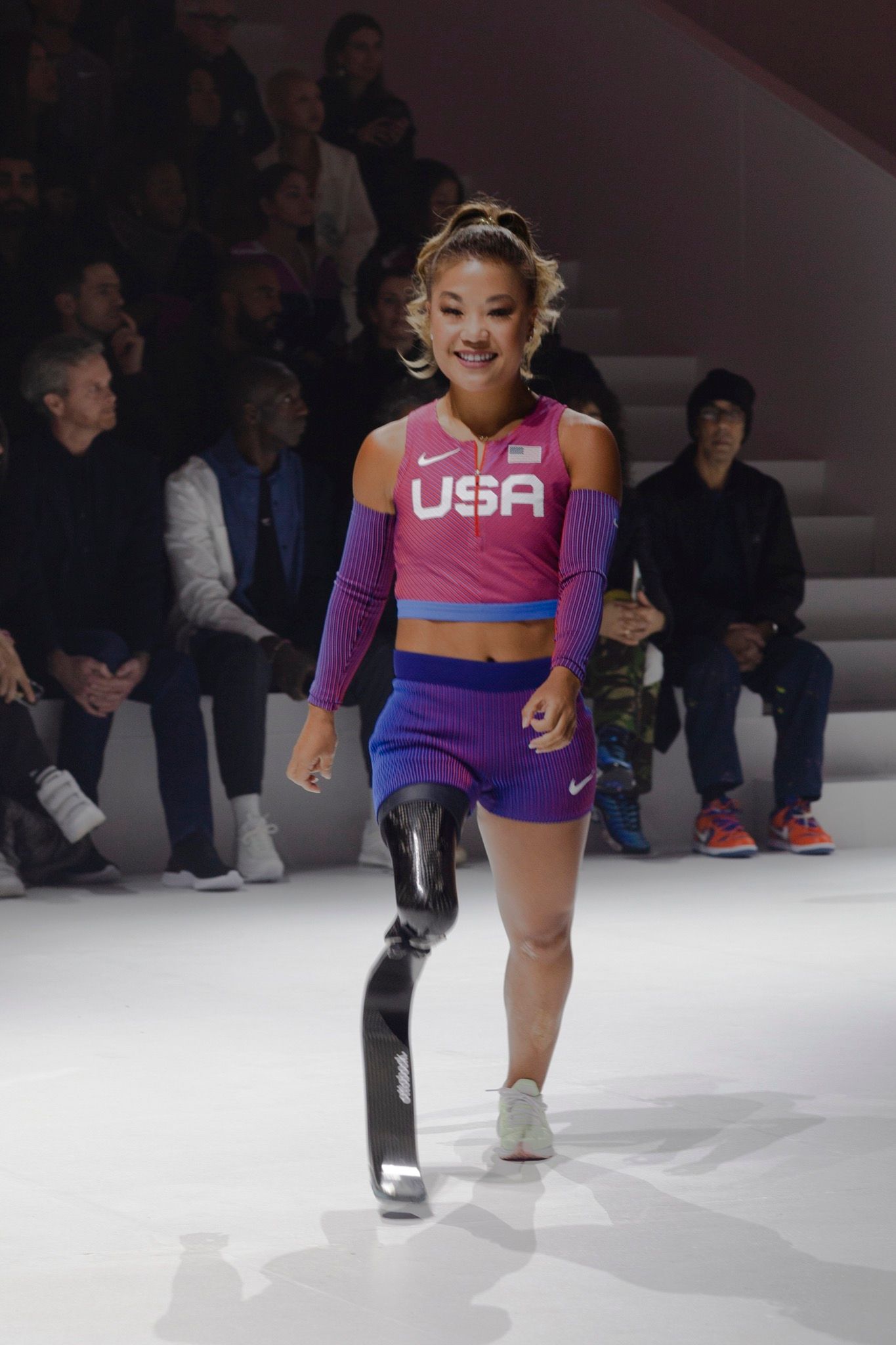
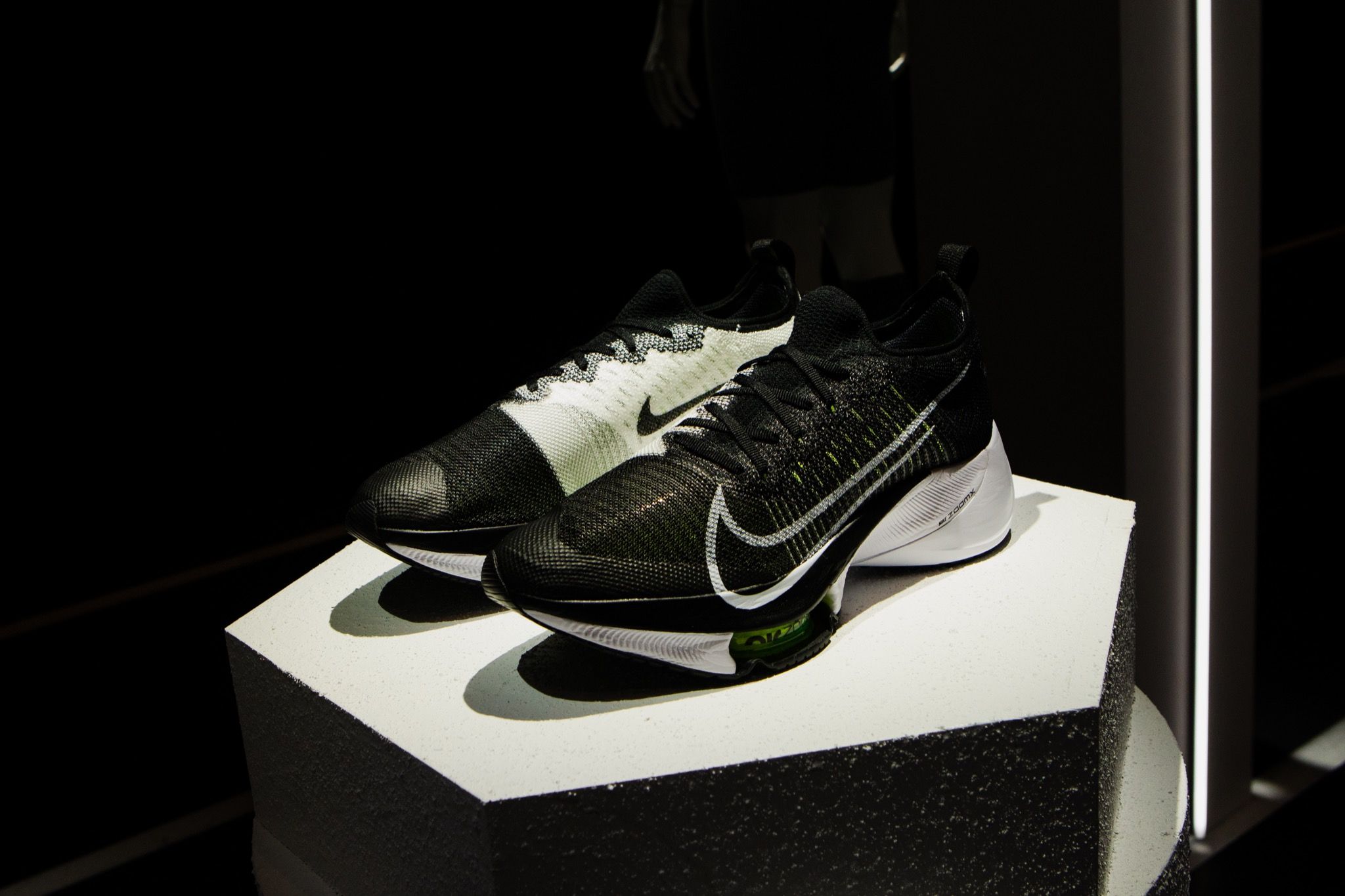
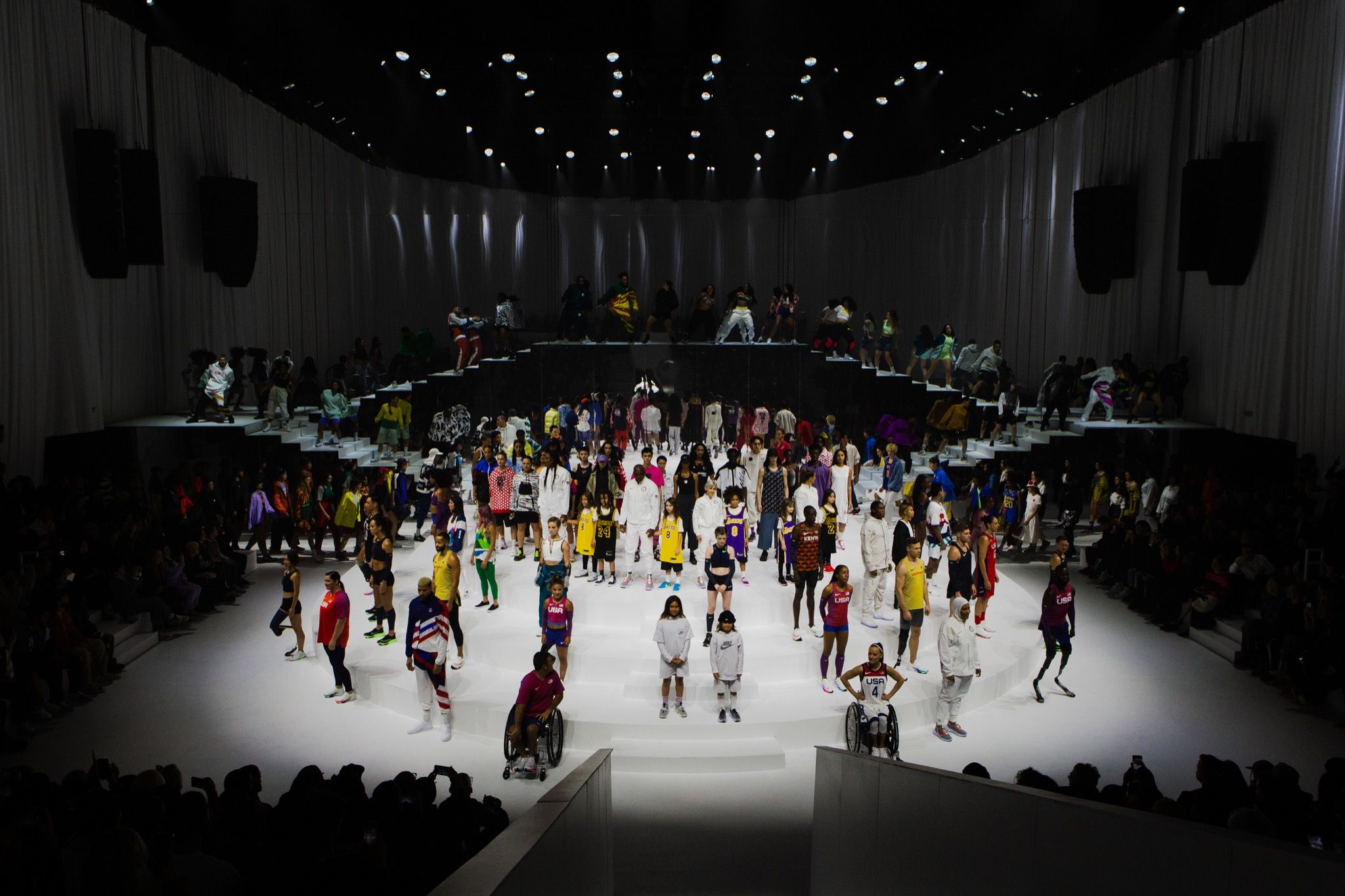
Credits
- Text: Victoria Camblin
